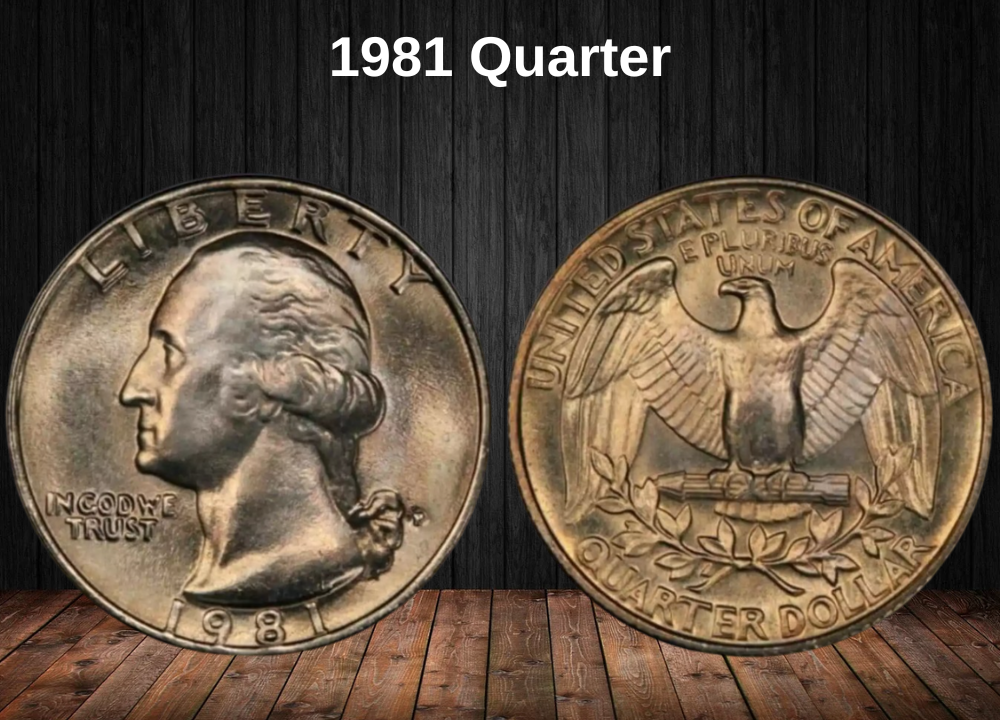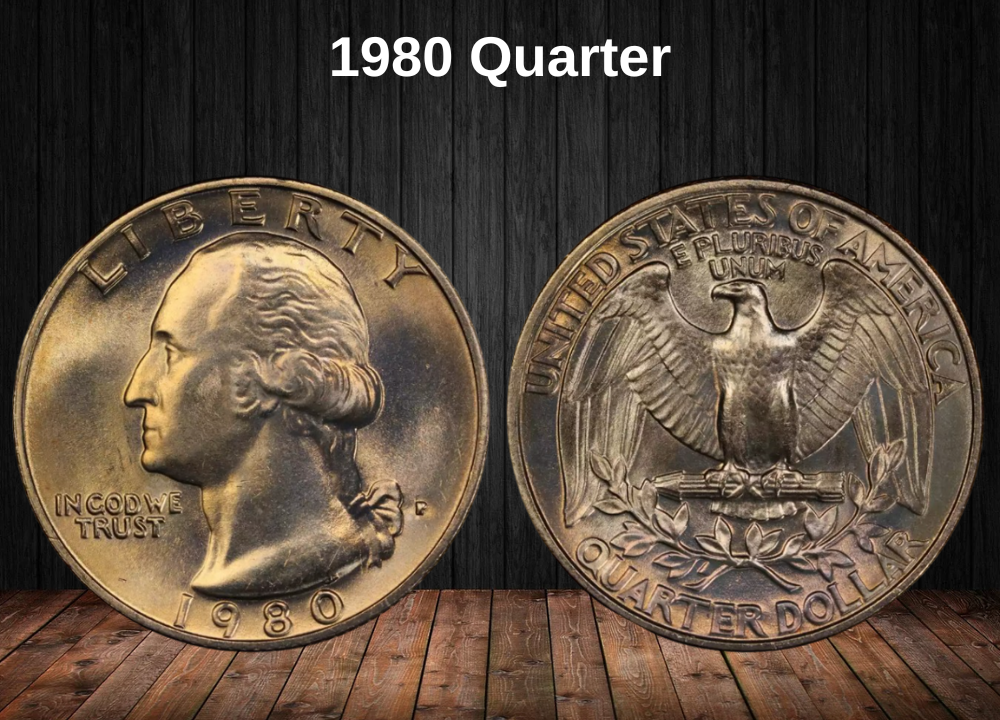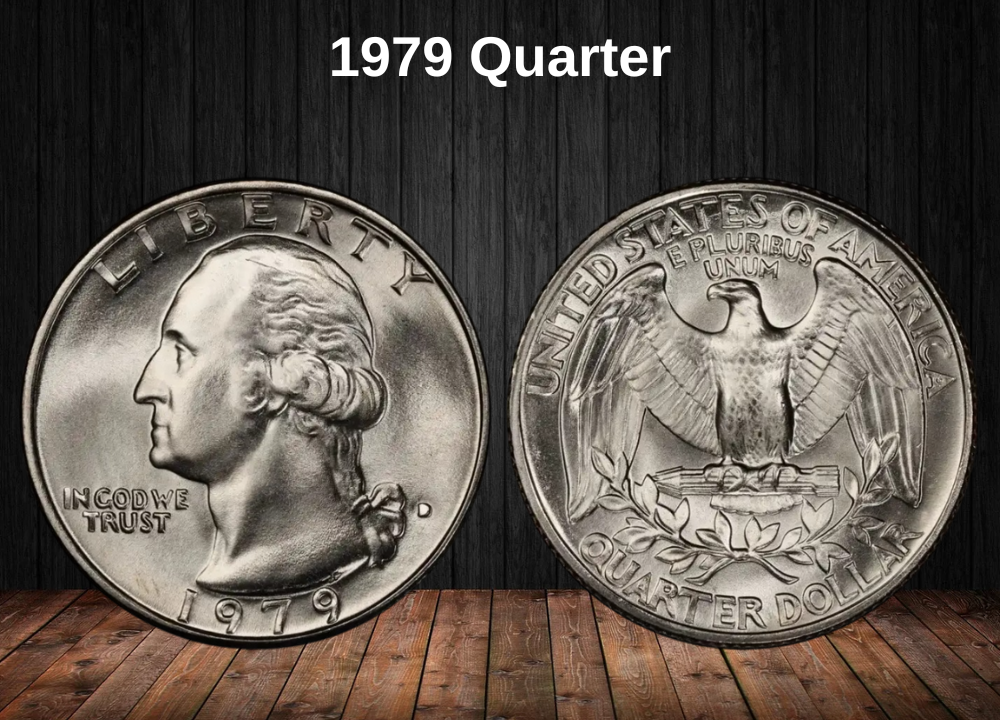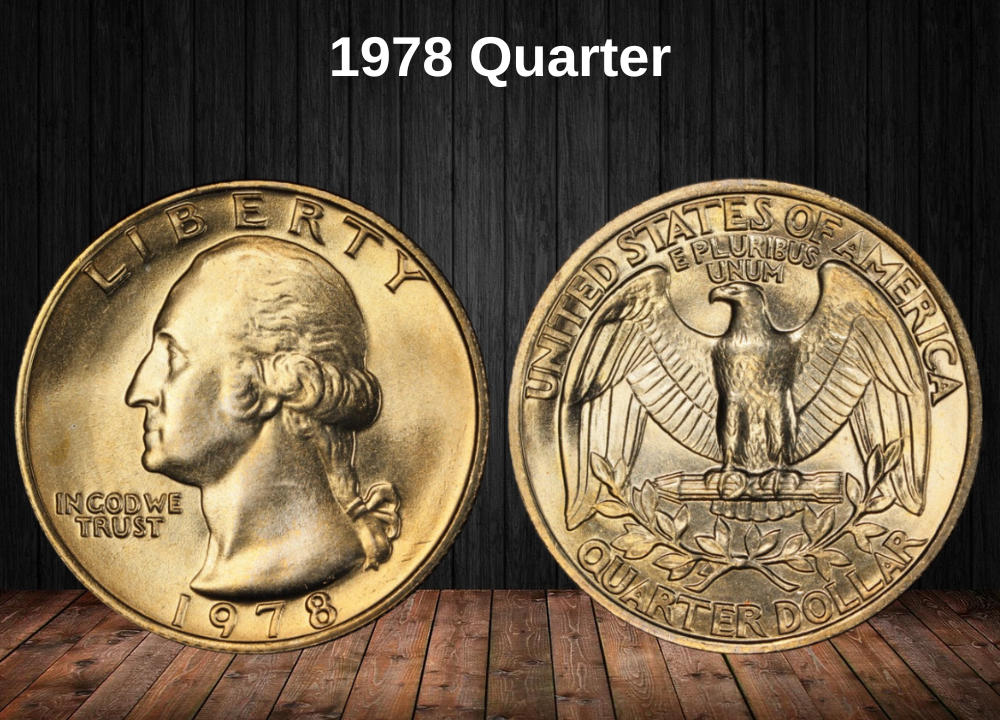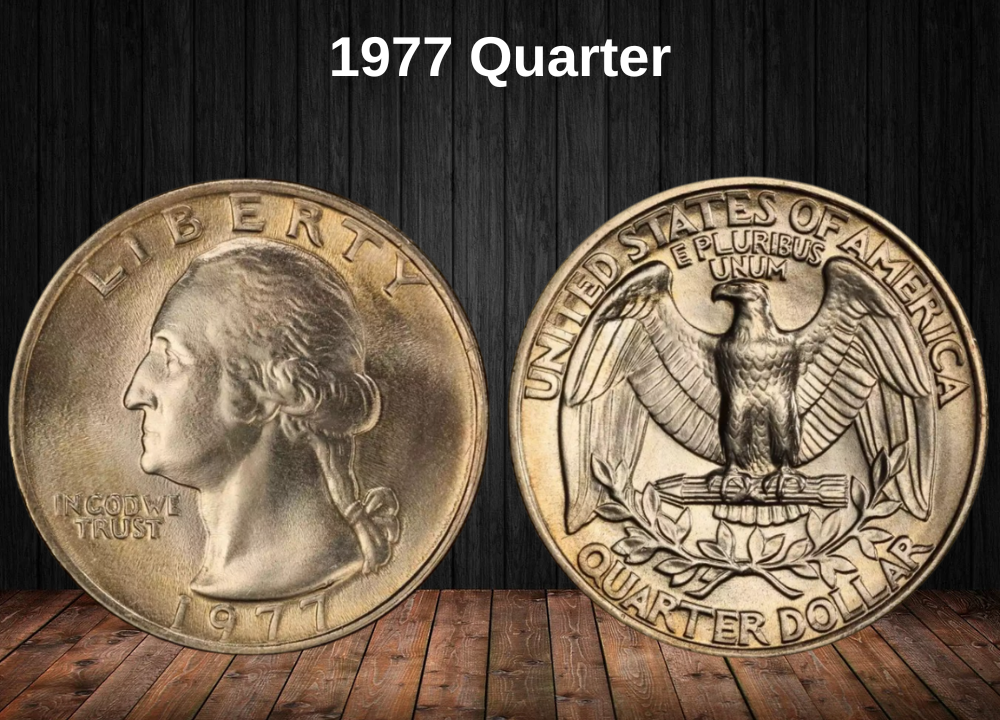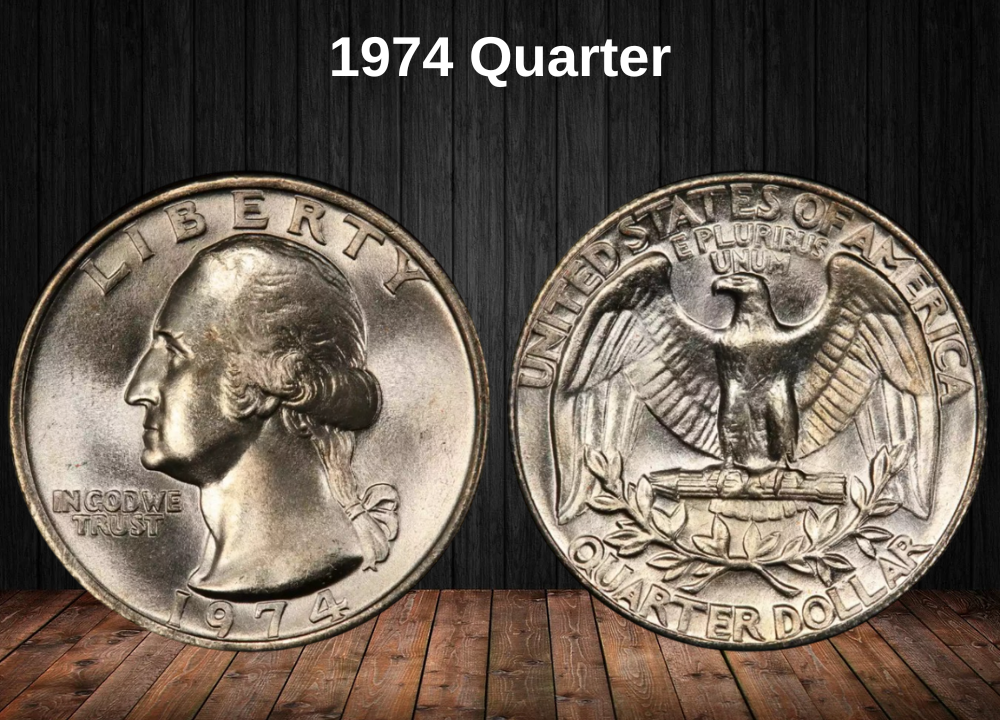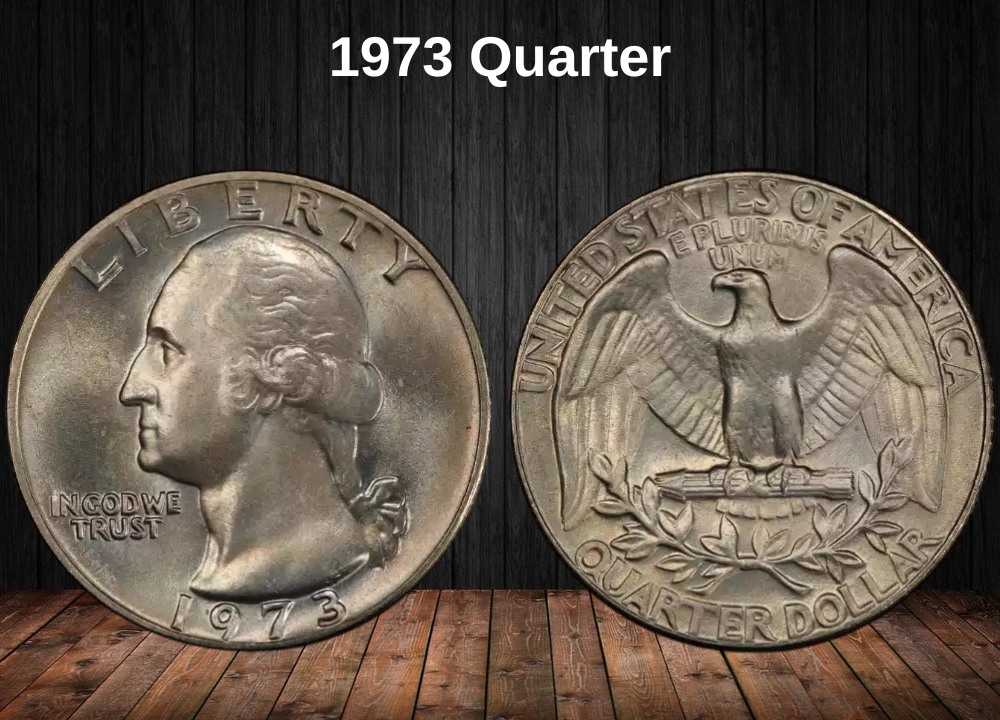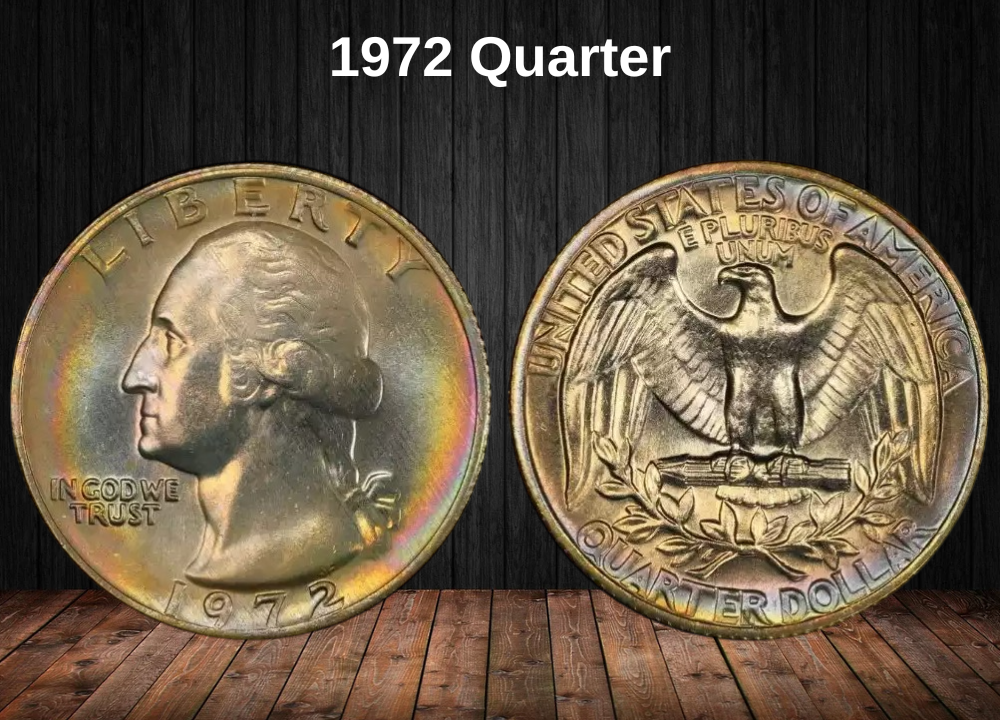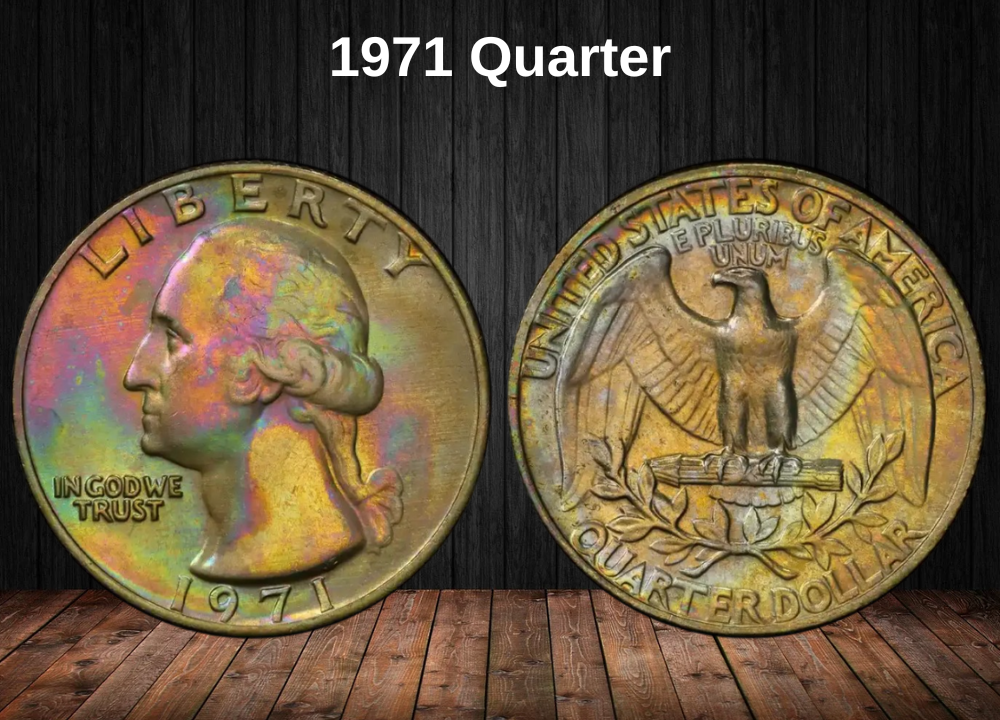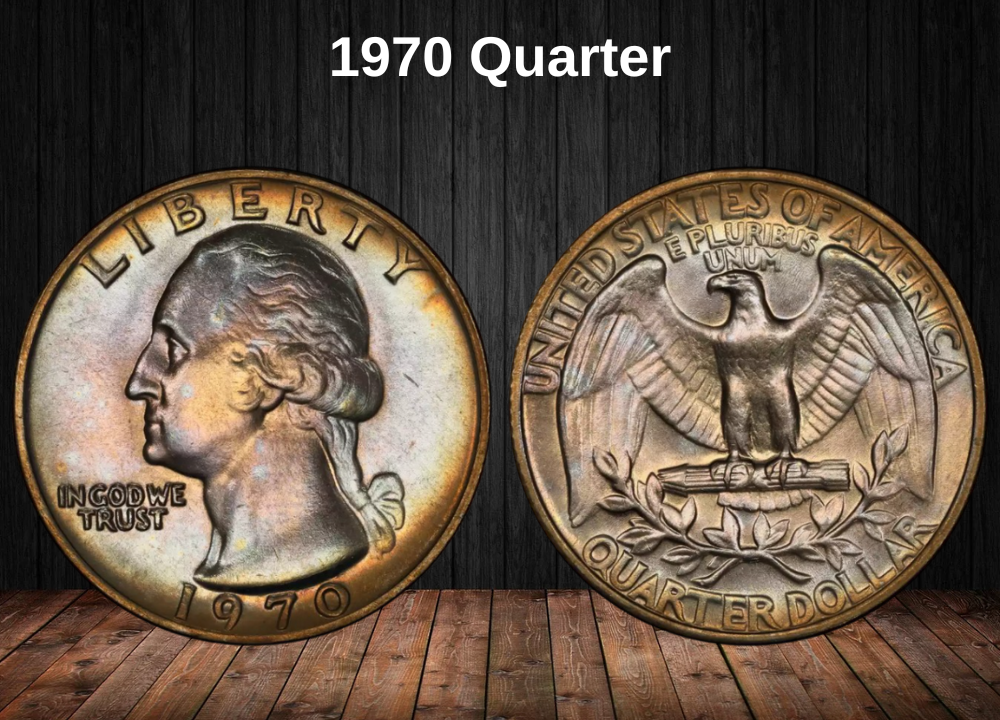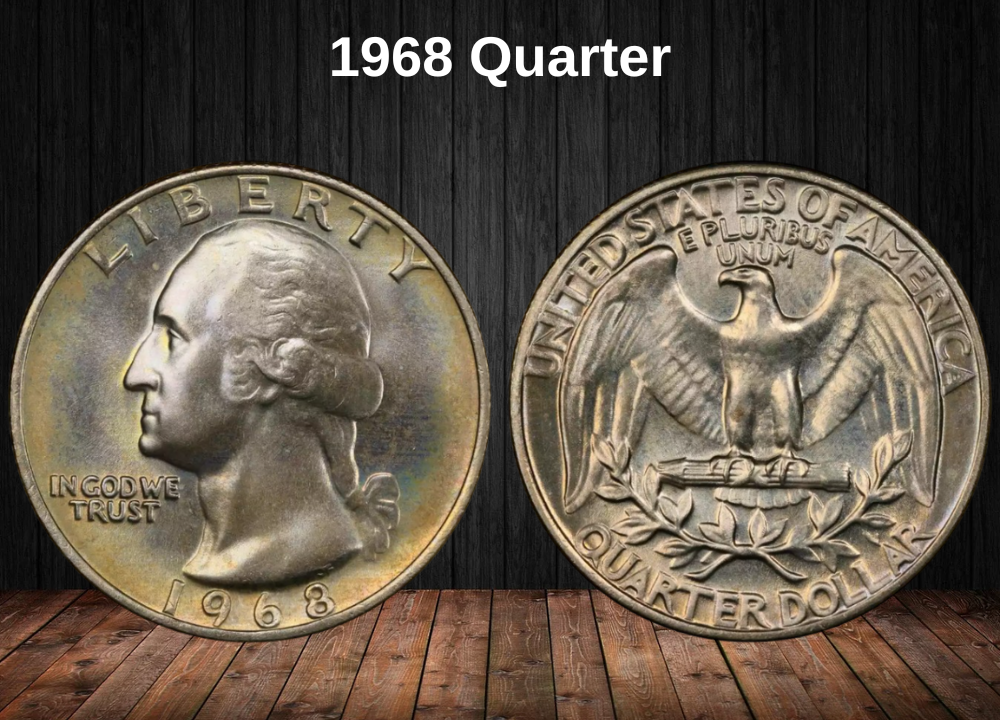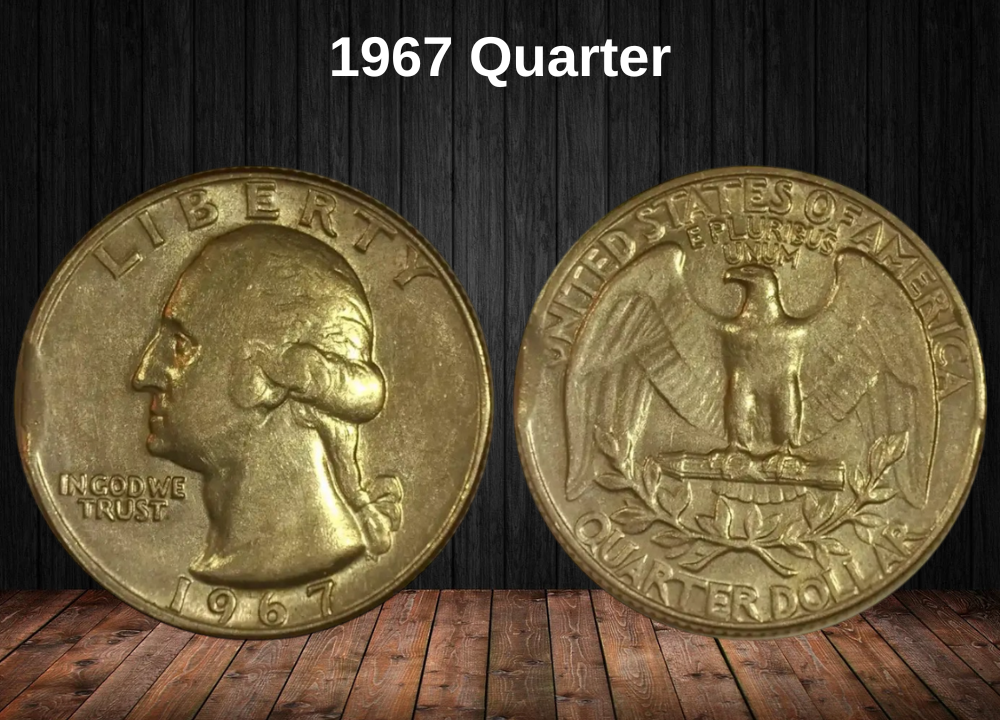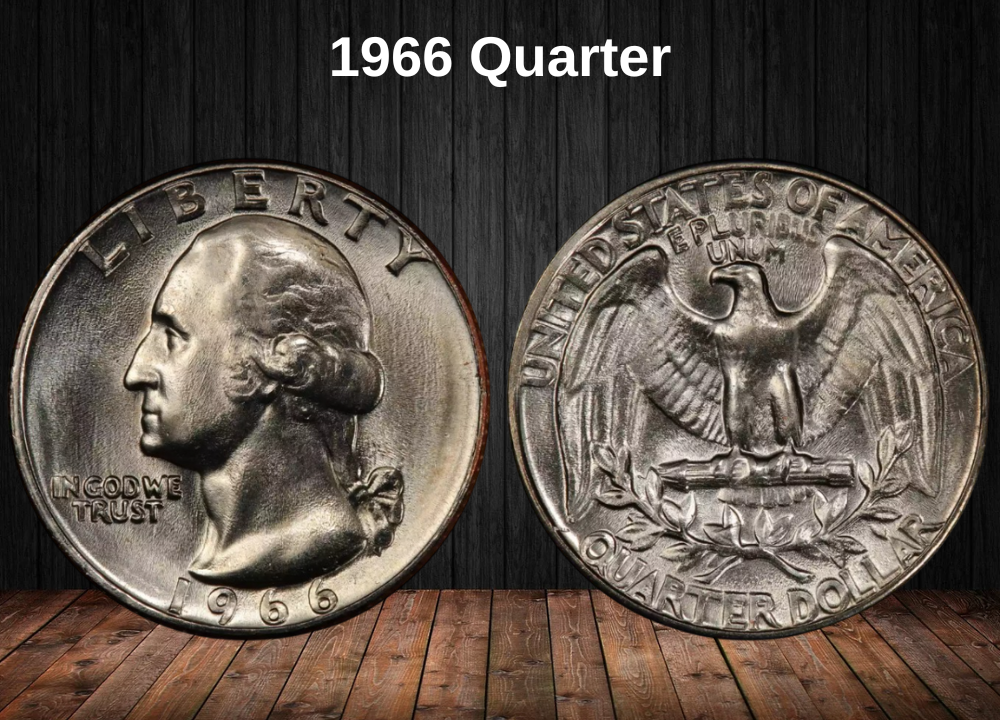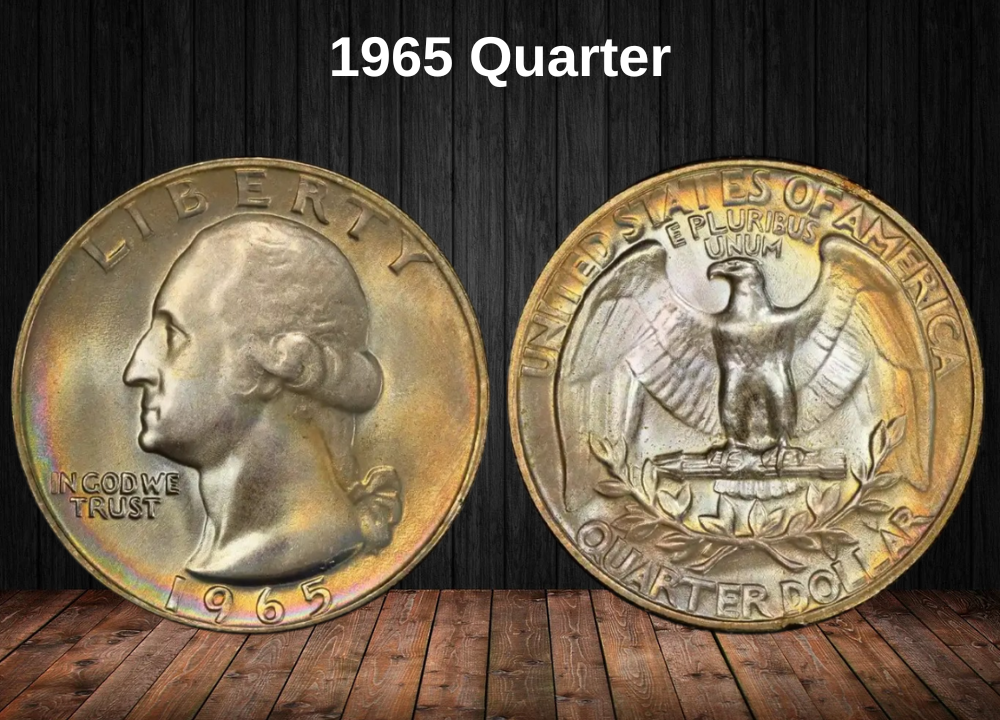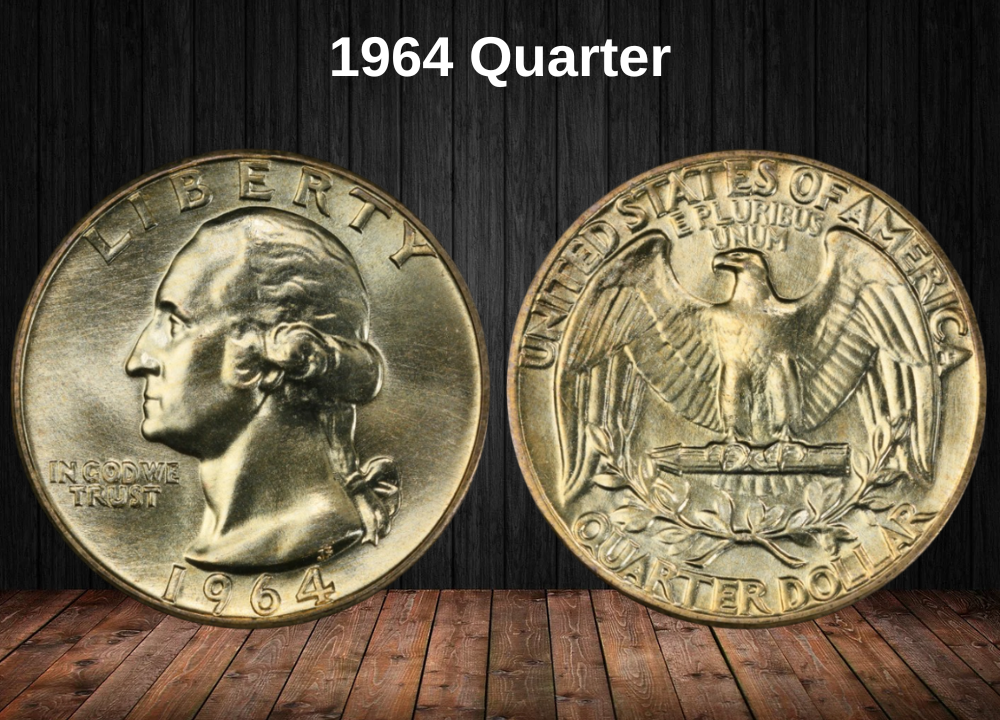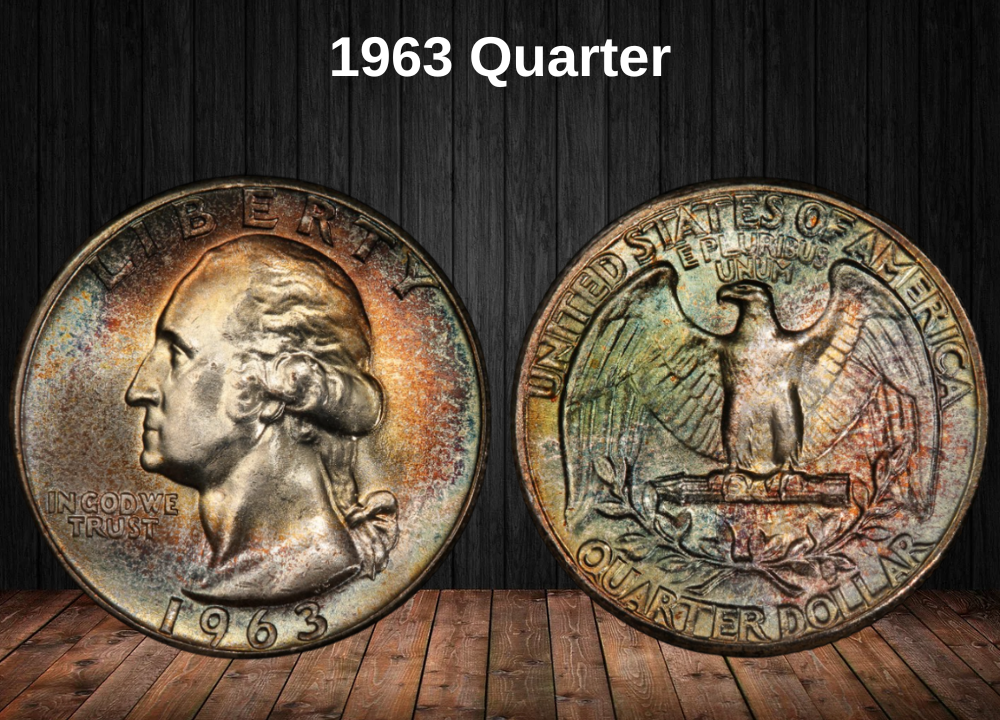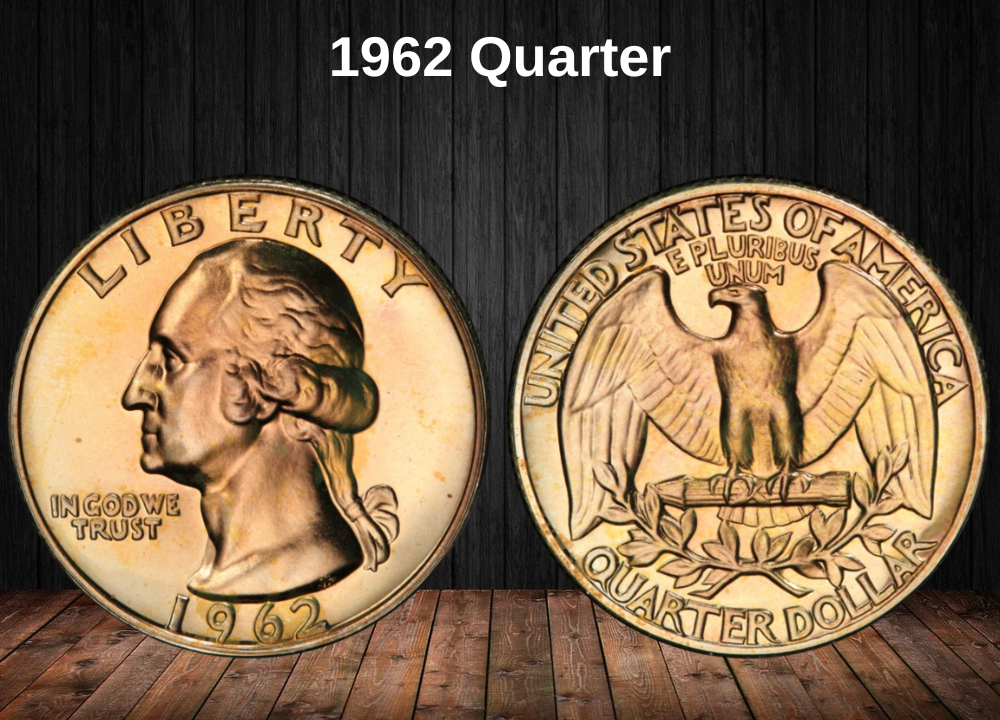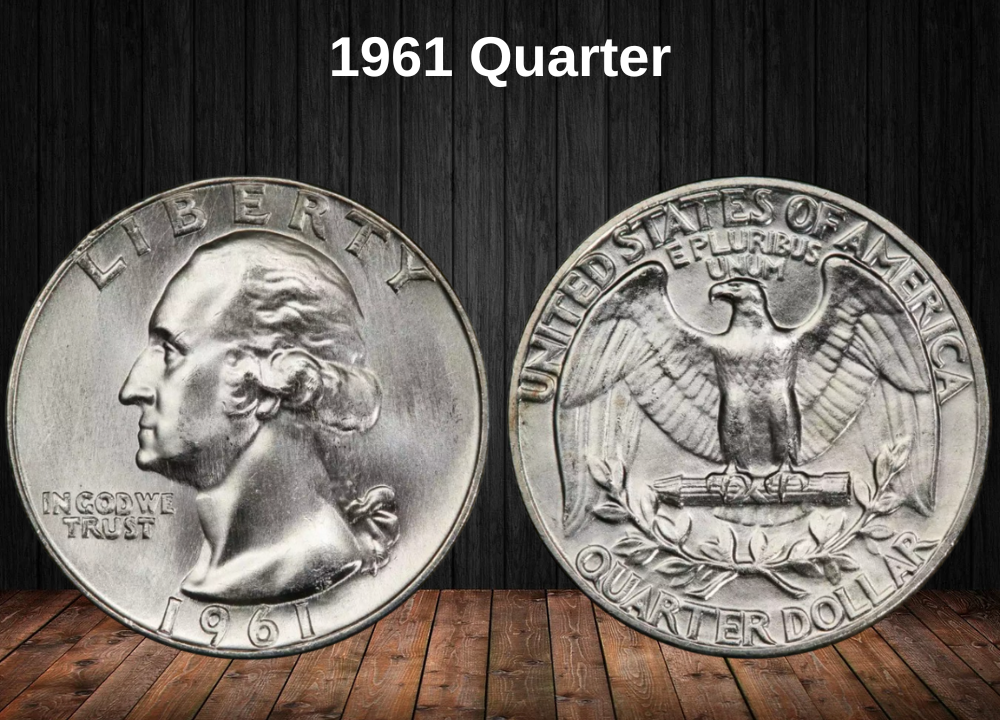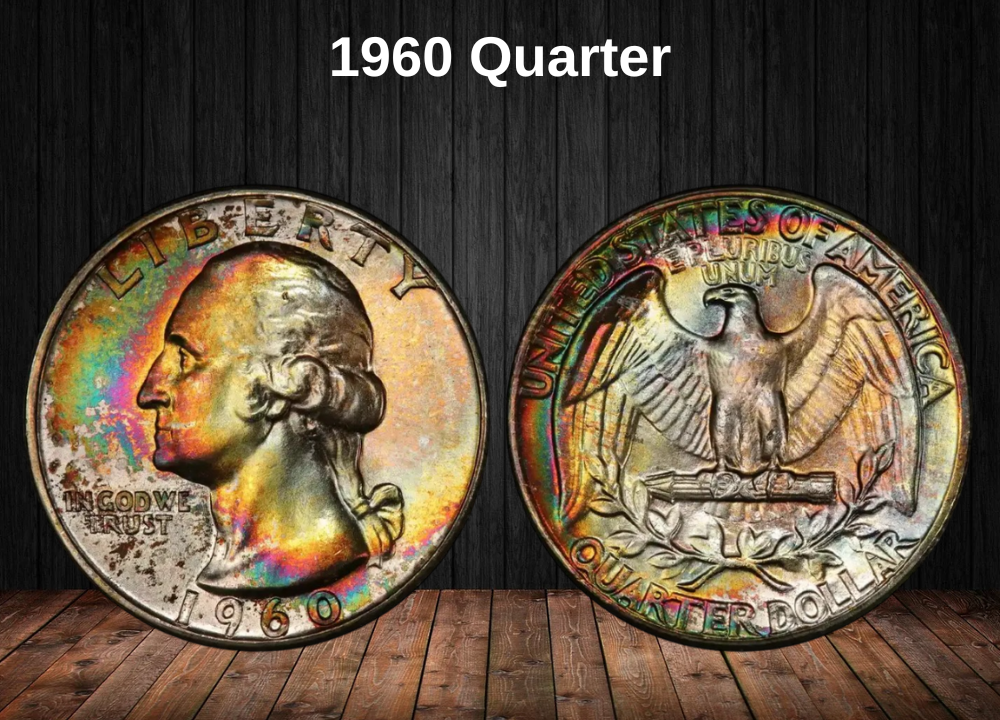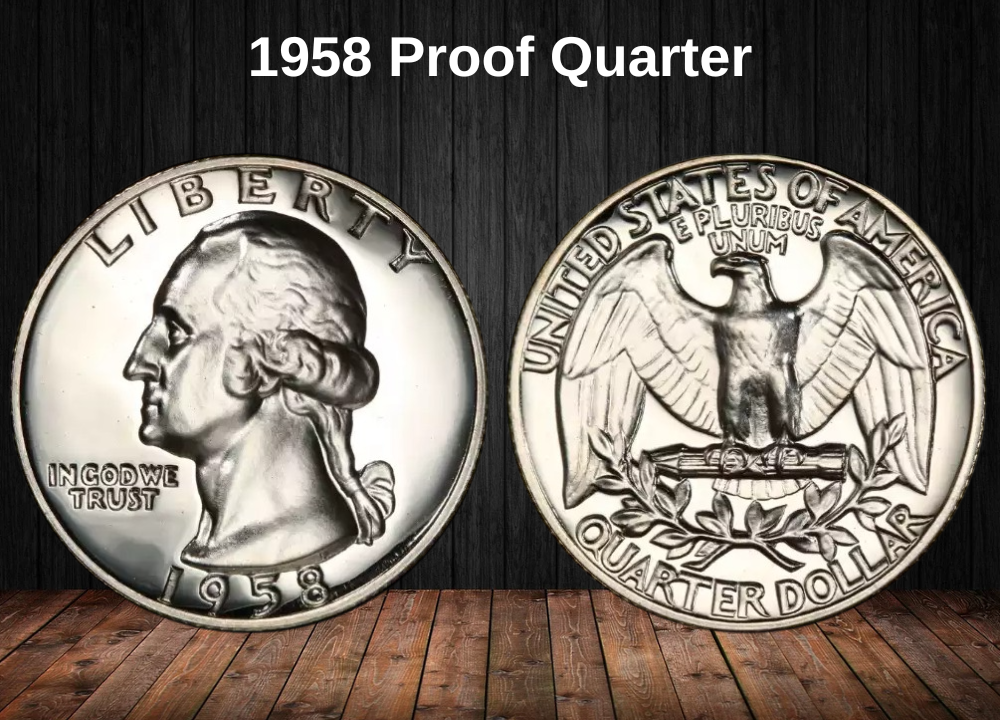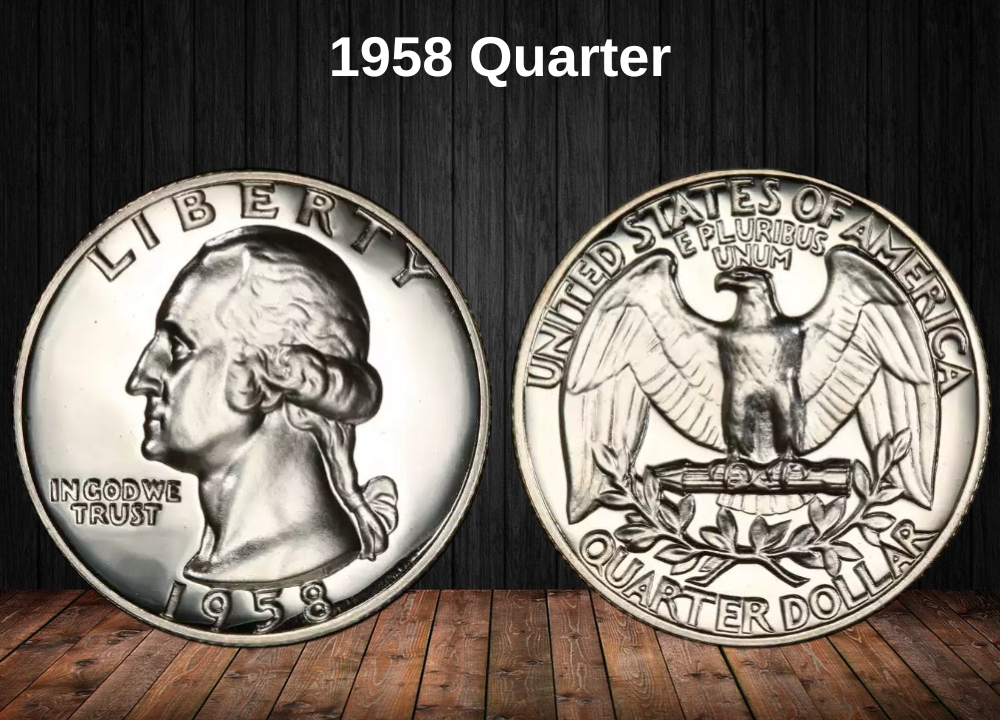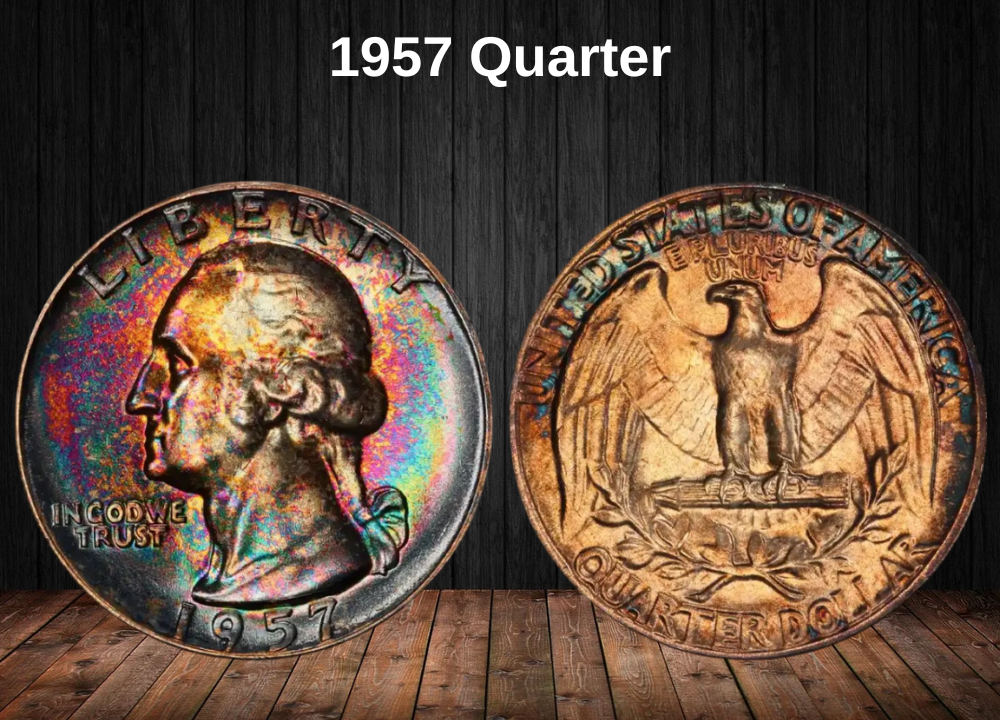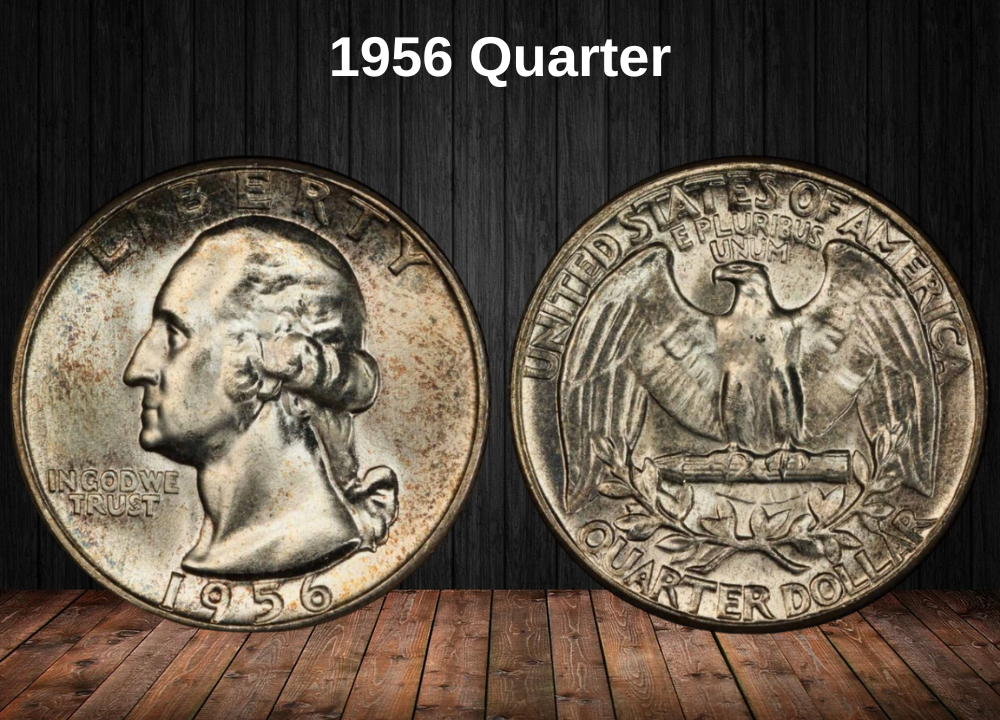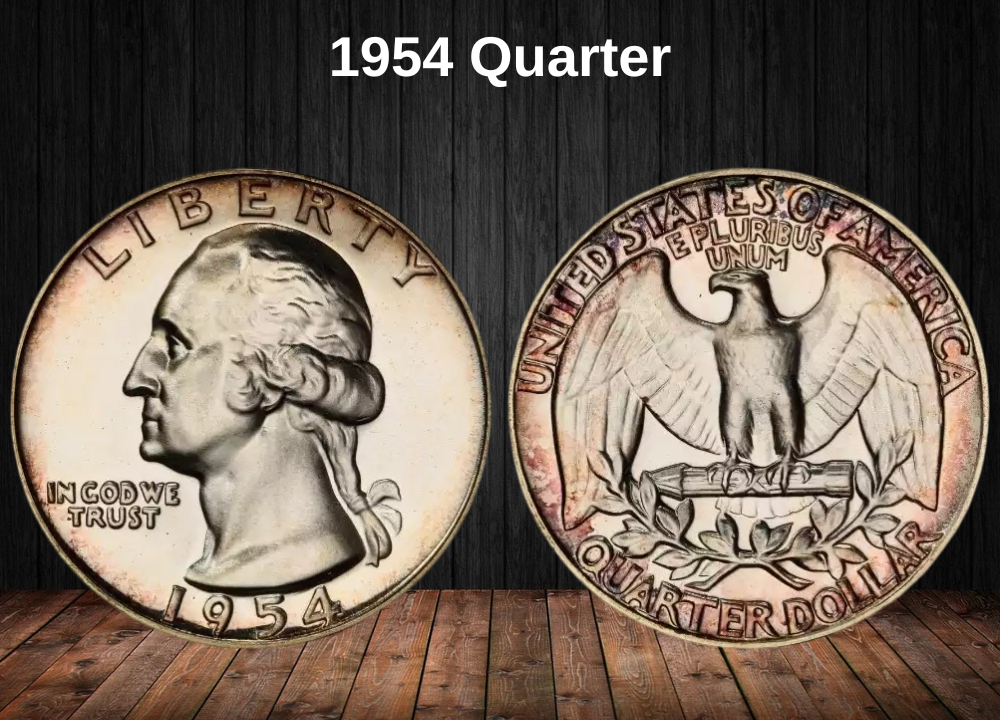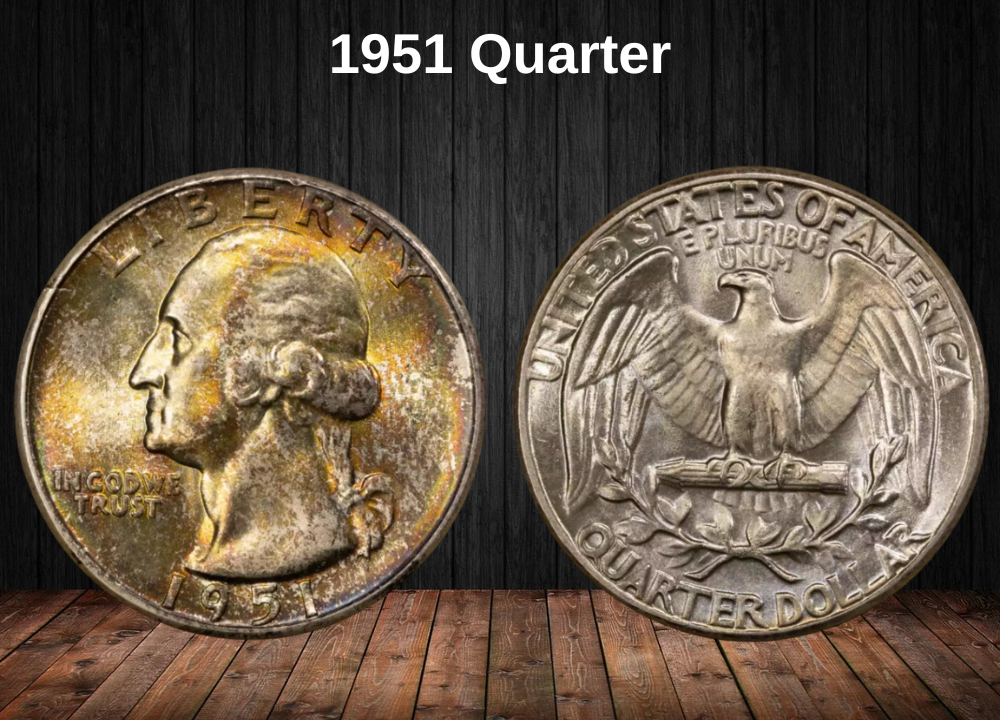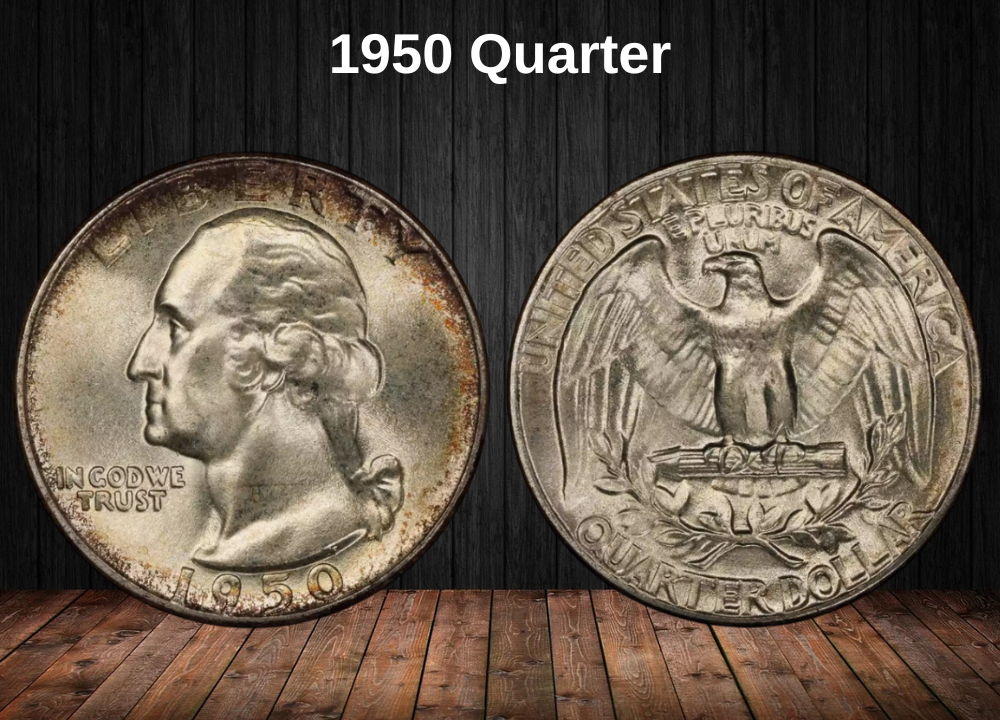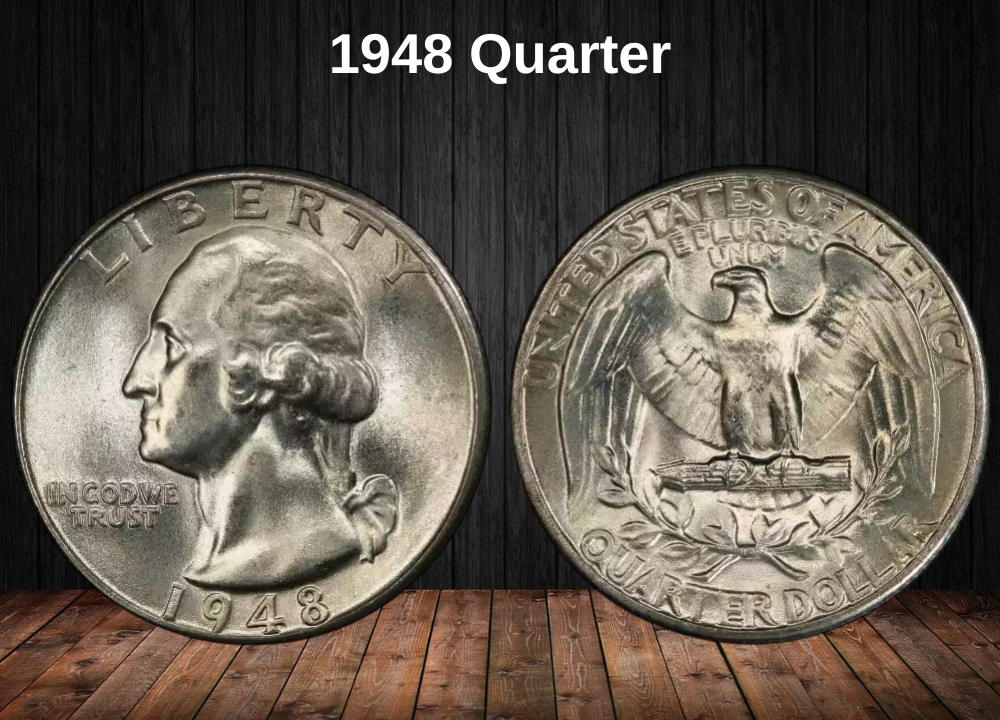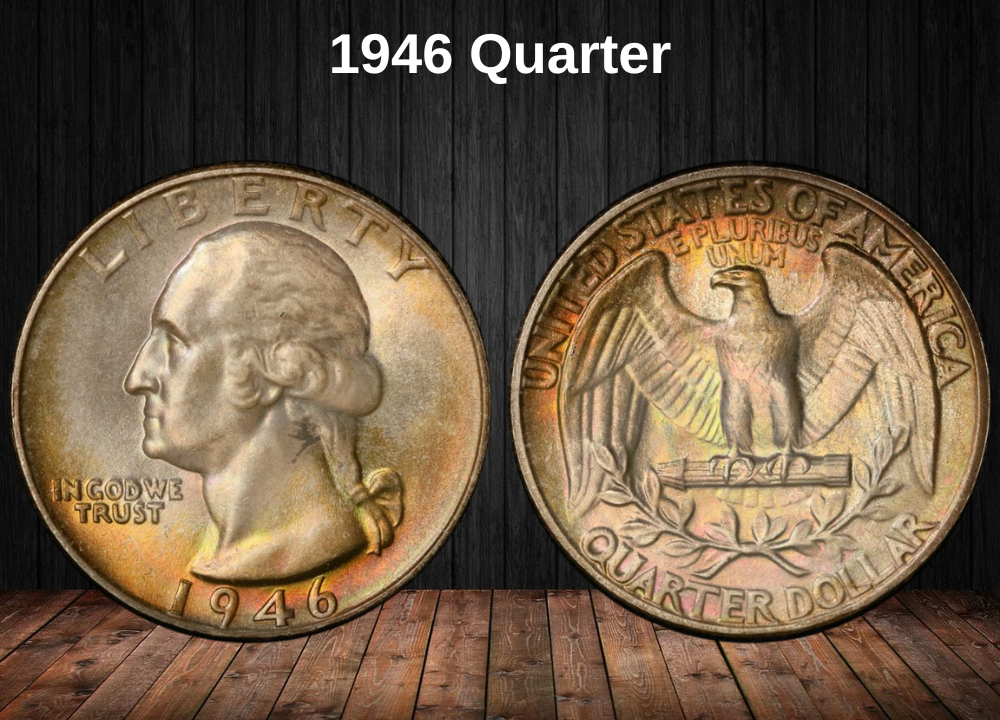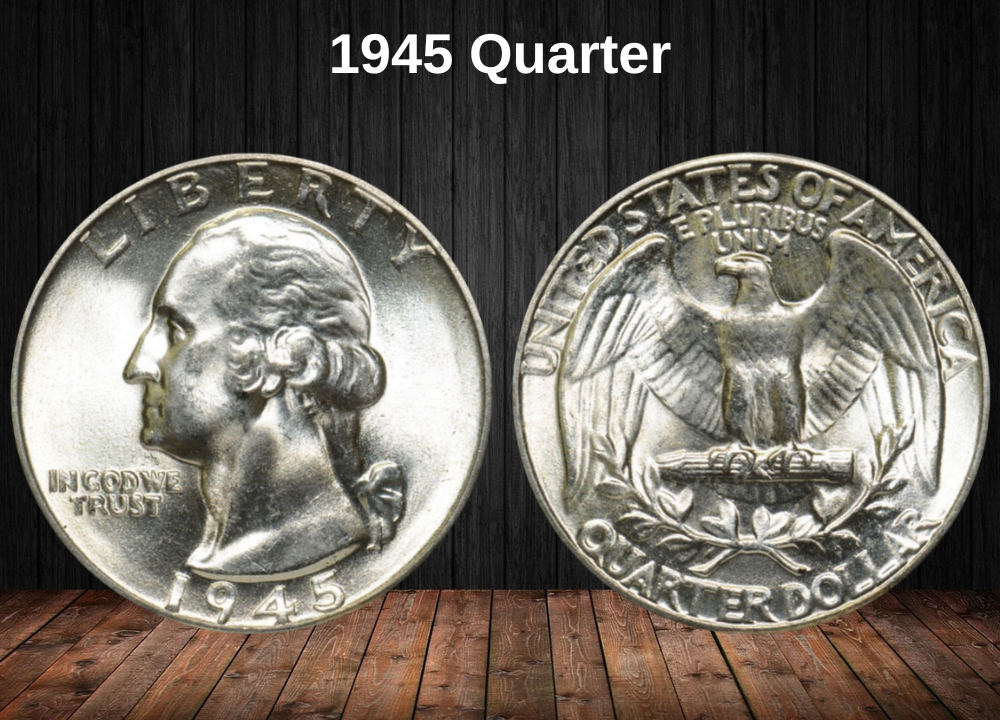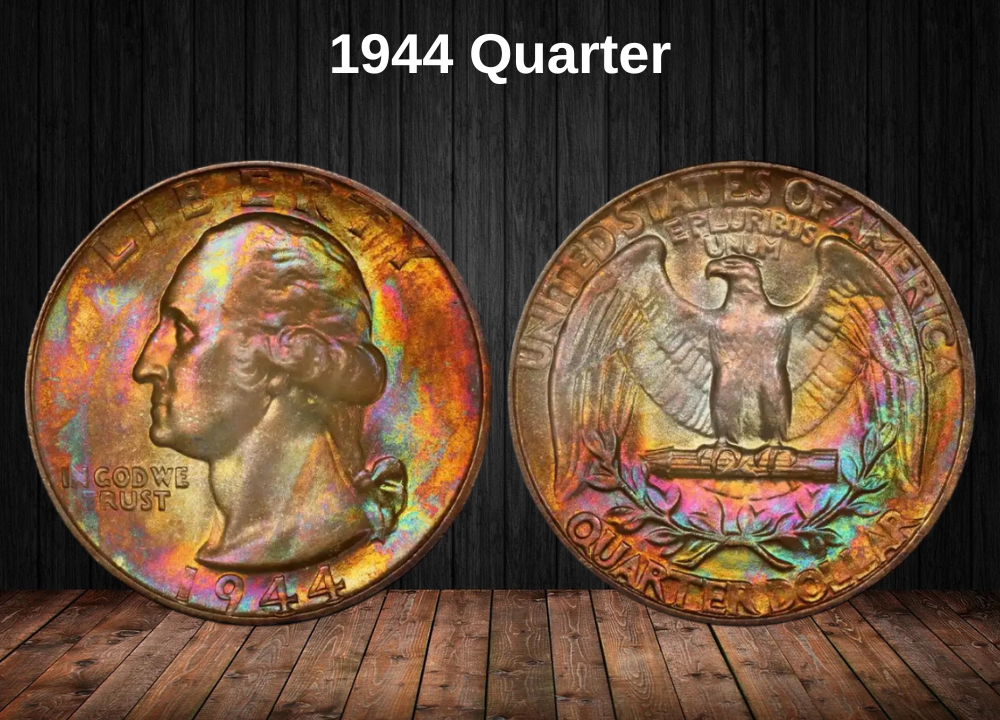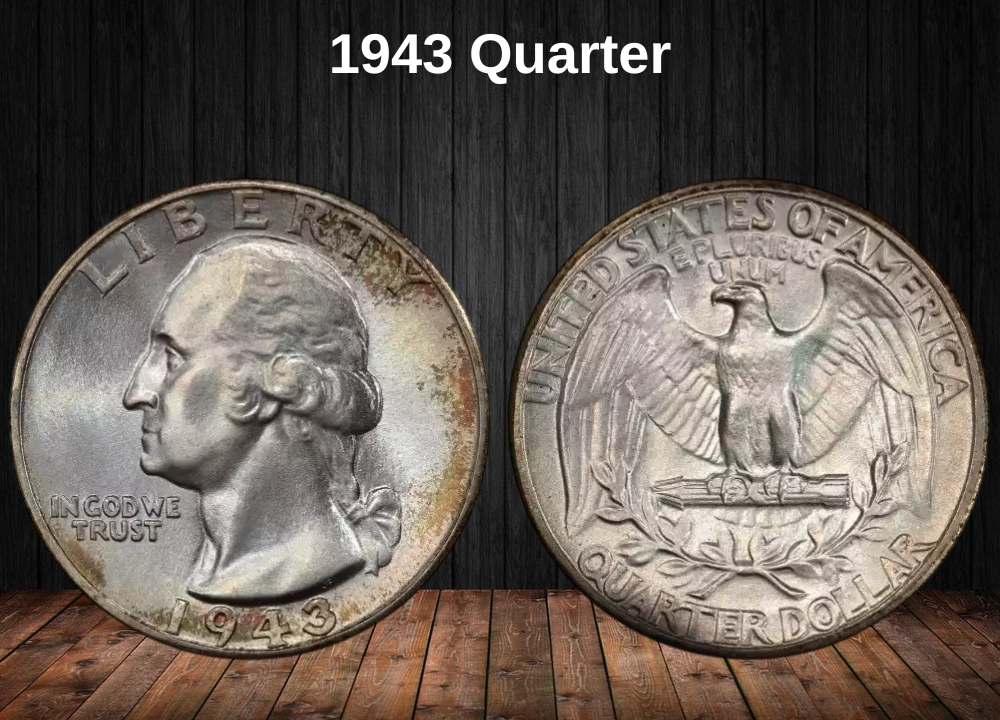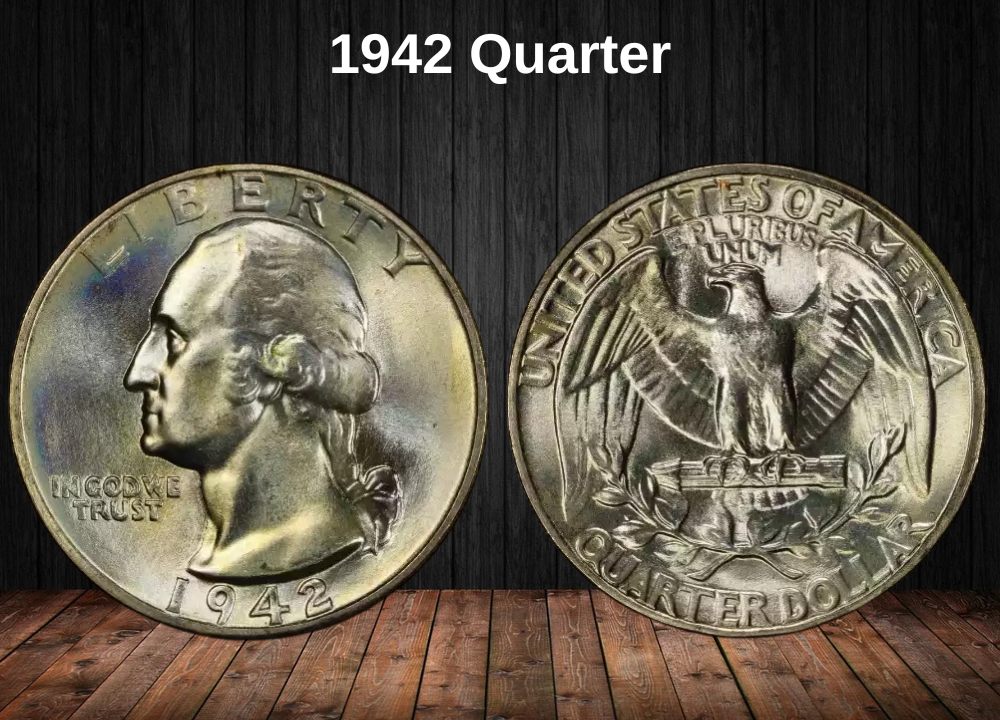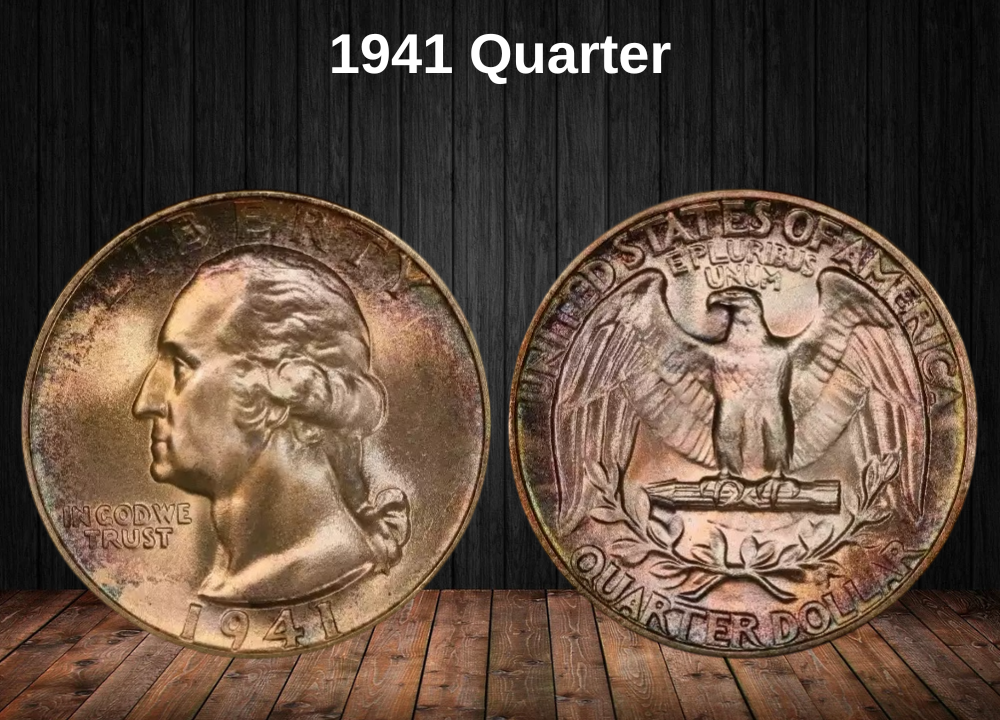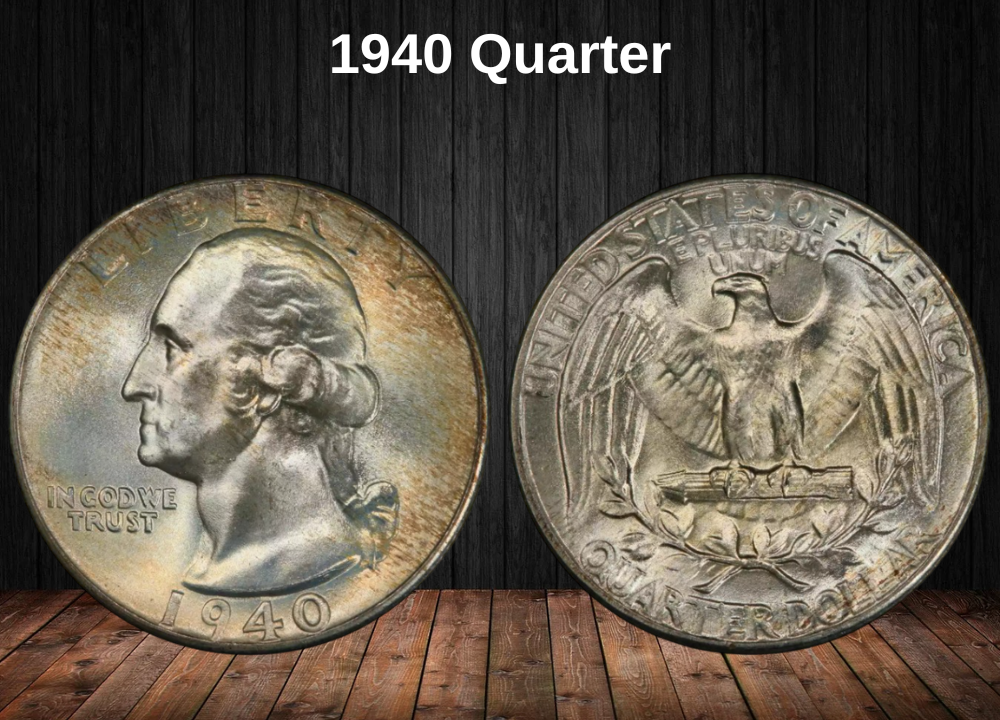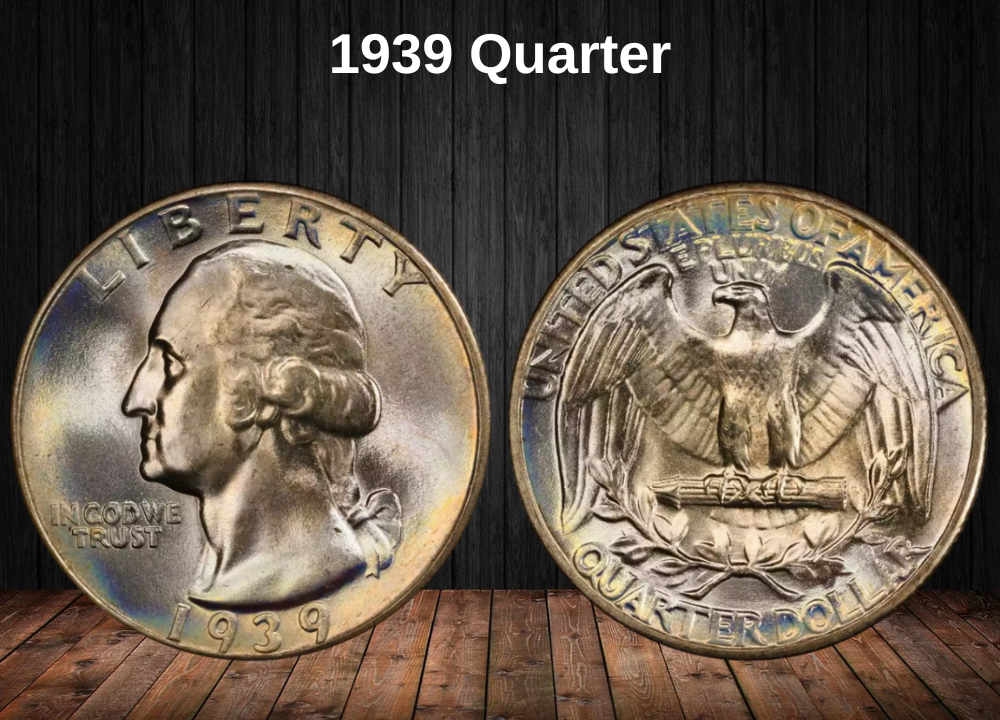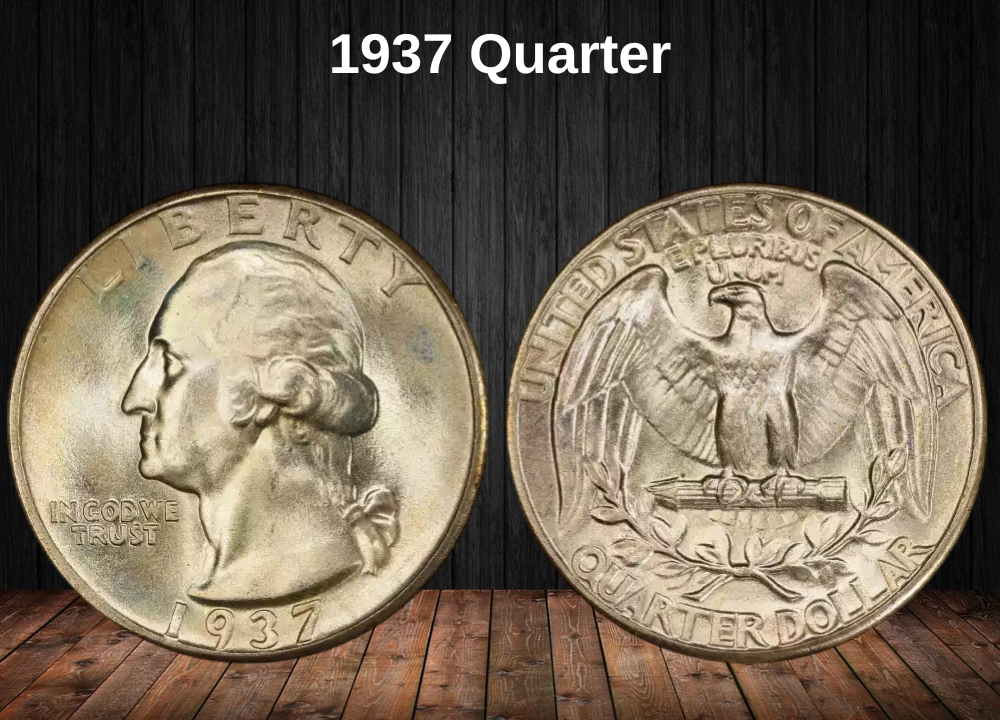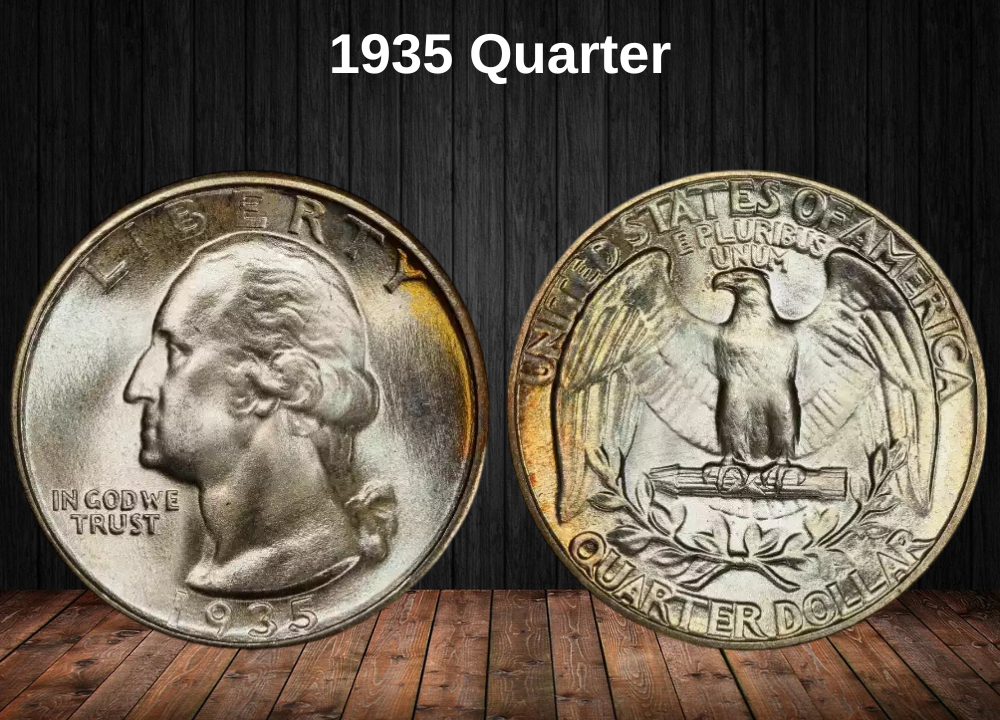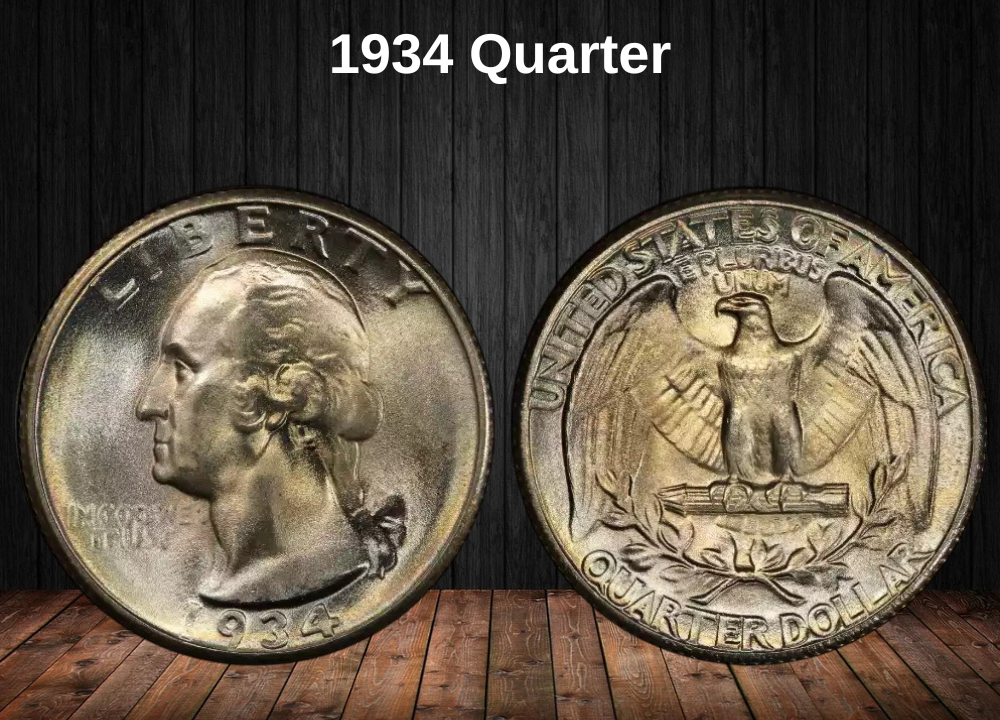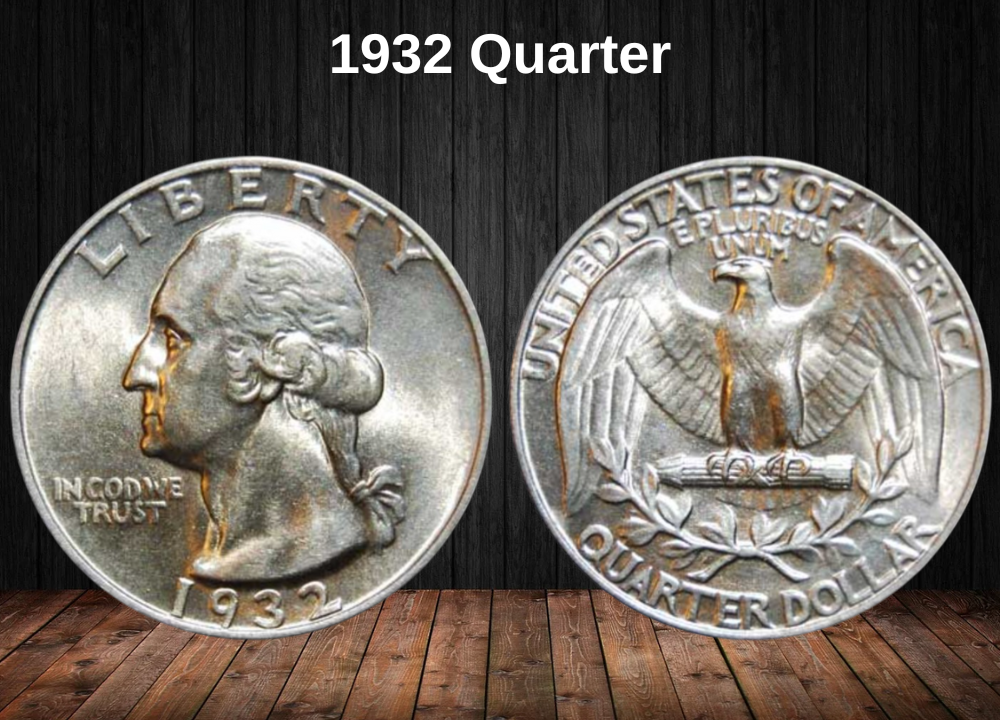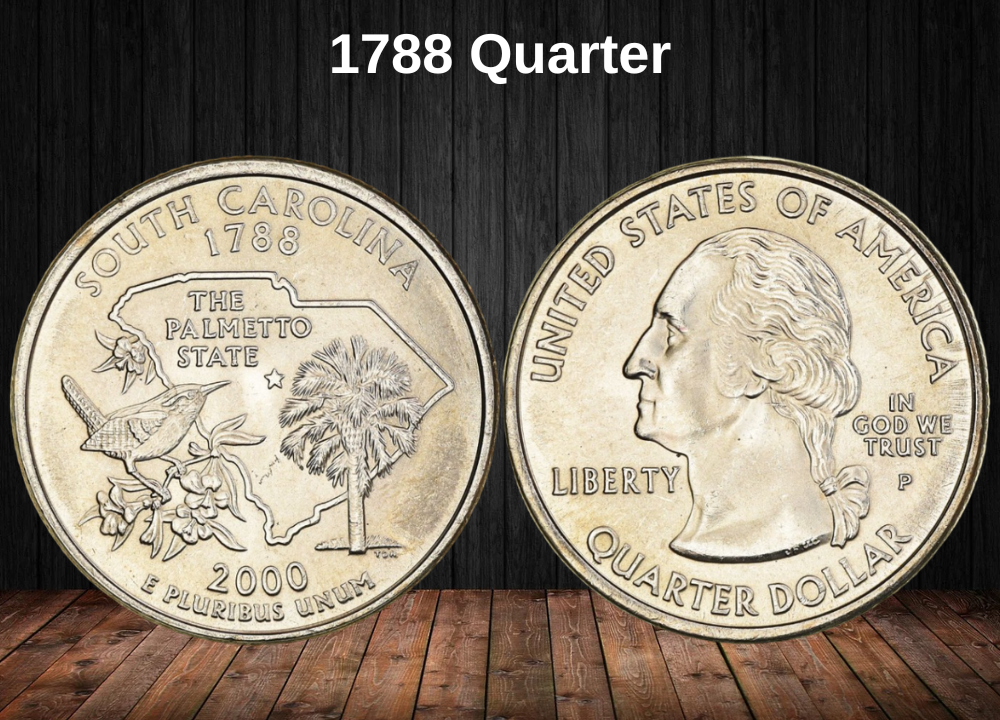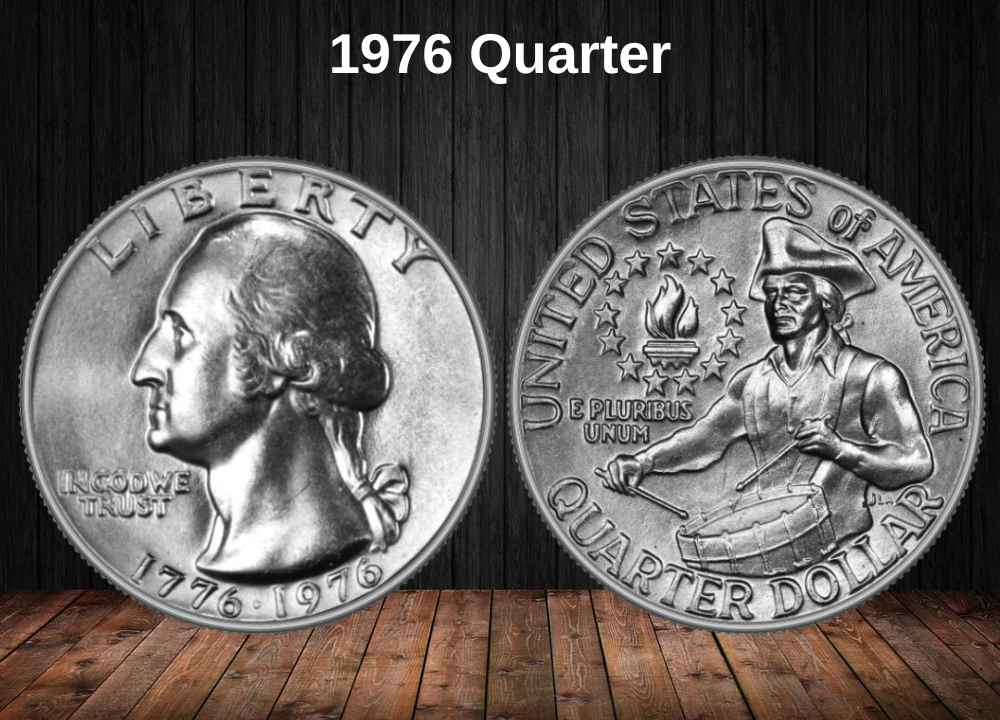The 1969 Washington Quarter carries special significance for collectors as part of the early clad era, just a few years after silver was removed from U.S. quarters. By this time, the Mint had stabilized production, but subtle differences between Philadelphia, Denver, and San Francisco issues still make 1969 quarters an intriguing year to study.
For circulation strikes, most 1969 quarters remain common in lower grades and trade for their face value of $0.25. But the story changes in higher grades, where Denver issues command premiums thanks to stronger market demand, reaching nearly $19 in Mint State.
The San Francisco proofs are also highly collectible, especially those with Cameo (CAM) and Deep Cameo (DCAM) finishes, where the frosted devices stand out dramatically against mirrored fields. A 1969-S DCAM can reach nearly $27, proving that surface quality and contrast drive collector interest.
In short, while ordinary 1969 quarters are everyday pocket change, their high-grade and proof counterparts reveal serious collector potential.
1969 Quarter Value By Variety
| Type | Good | Fine | AU | MS | PR |
|---|---|---|---|---|---|
| 1969 No Mint Mark Quarter Value | $0.25 | $0.29 | $0.67 | $11.00 | — |
| 1969 D Quarter Value | $0.25 | $0.29 | $0.67 | $18.86 | — |
| 1969 S Proof Quarter Value | — | — | — | — | $6.62 |
| 1969 S CAM Quarter Value | — | — | — | — | $7.62 |
| 1969 S DCAM Quarter Value | — | — | — | — | $26.88 |
Top 7 Most Valuable 1969 Quarters Worth Money
| Rank | Coin / Variety | Grade | Auction Record Price |
|---|---|---|---|
| 1 | 1969 No Mint Mark Quarter | MS 68 | $9,200 |
| 2 | 1969-D Quarter | MS 67+ | $5,100 |
| 3 | 1969-S Proof Quarter (DCAM) | PR 69 DCAM | $3,000 |
| 4 | 1969-S Proof Quarter (CAM) | PR 69 CAM | $1,250 |
| 5 | 1969-D Quarter | MS 67 | $650 |
| 6 | 1969 No Mint Mark Quarter | MS 67 | $500 |
| 7 | 1969-S Proof Quarter (Regular Proof) | PR 69 | $275 |
History of the 1969 Quarter
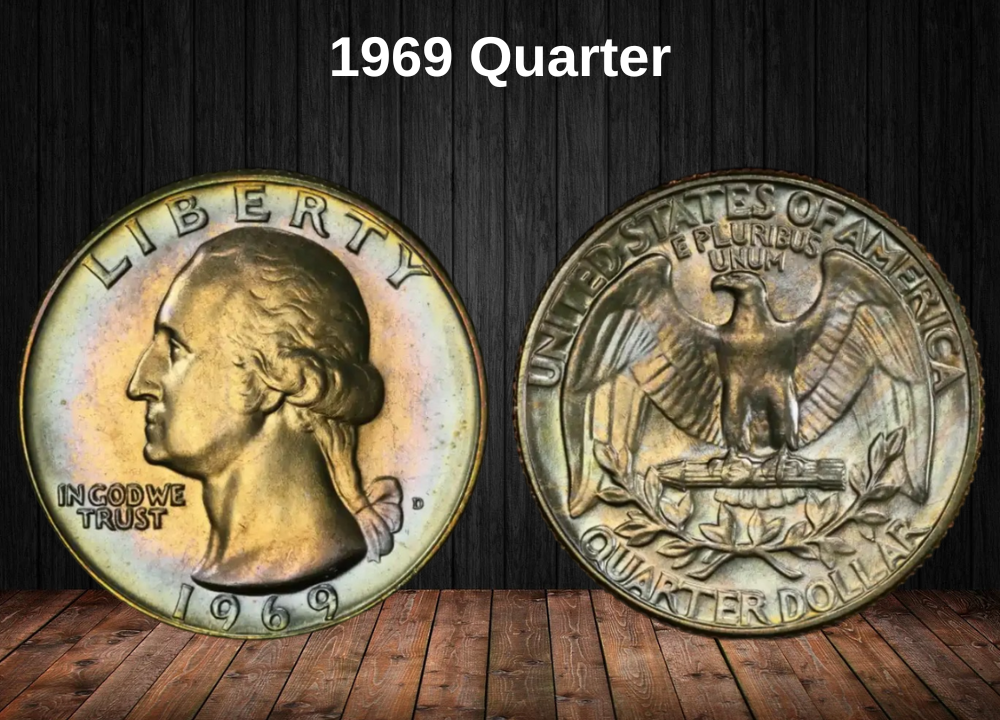
The Washington quarter series began in 1932, originally issued to commemorate the 200th anniversary of George Washington’s birth. Designed by John Flanagan, the coin’s simple yet iconic design was chosen for both its aesthetic appeal and practicality. The low relief made minting easier, though it also required frequent adjustments to the dies over the years.
For more than three decades, these quarters were composed of 90% silver and 10% copper. That changed dramatically in the mid-1960s, when rising silver prices led to widespread hoarding. By 1964, Americans were pulling silver quarters from circulation in massive numbers, creating a serious shortage in everyday commerce.
In response, President Lyndon B. Johnson announced in 1965 that silver would be eliminated from dimes and quarters. Starting that year, quarters were struck in a copper-nickel clad composition, a standard that continues to this day.
The transition period was chaotic. The first clad quarters didn’t appear until August 1966, and to discourage further hoarding, the Mint removed mint marks from 1965 through 1967. During these years, no proof coins were issued. Instead, collectors received Special Mint Sets (SMS), which offered better quality than circulation strikes but lacked the sharp detail of proofs.
By 1968, the Mint reintroduced mint marks and resumed proof production at the San Francisco facility. This set the stage for the 1969 quarters, struck in both Philadelphia and Denver for circulation, and San Francisco for proofs.
However, 1969 quarters often suffered from quality issues—soft strikes, die wear, and lower-quality planchets meant that well-struck, high-grade examples are scarcer than expected. This quality gap explains why today’s collectors pay strong premiums for Mint State and proof coins with exceptional preservation and contrast.
Key Features of the 1969 Quarter
The Obverse of the 1969 Quarter
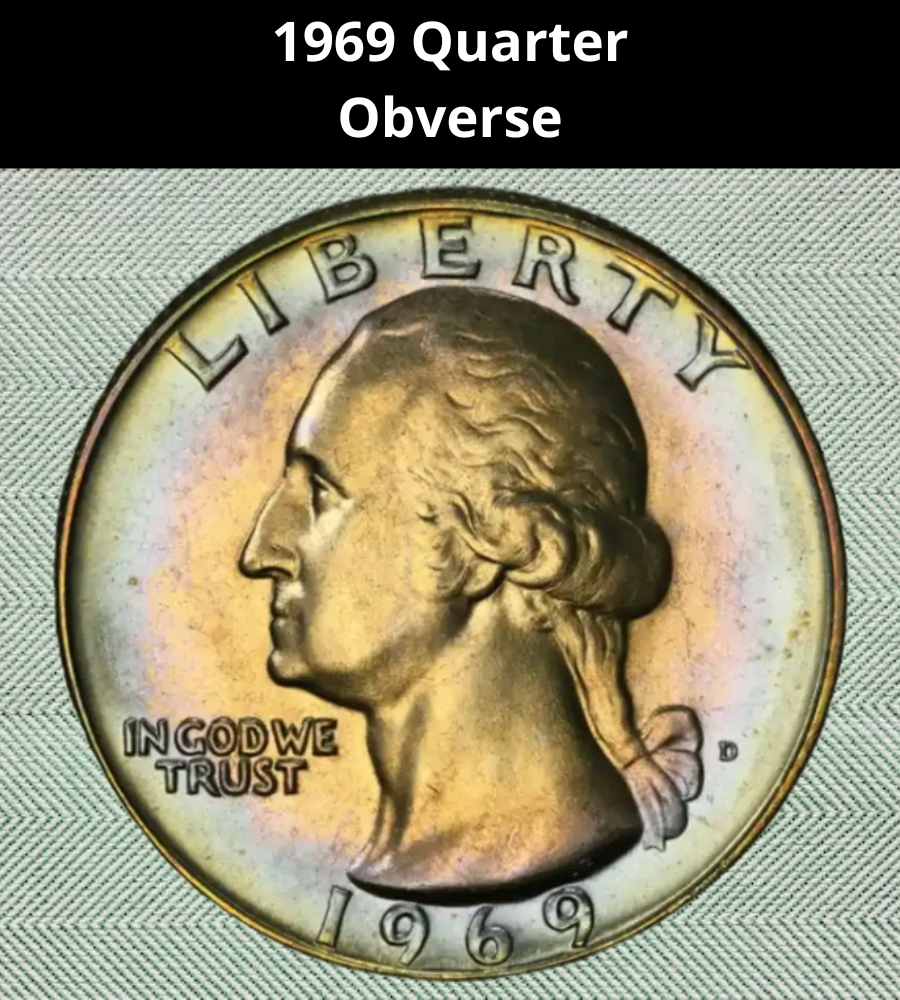
The obverse of the 1969 Washington quarter continues John Flanagan’s iconic portrait of George Washington, facing left. Above the bust is the inscription “LIBERTY”, while the motto “IN GOD WE TRUST” appears just below the chin along the left field. The year 1969 is positioned at the bottom rim.
Flanagan’s initials (JF) remain subtly engraved at the neckline truncation. Despite years of use, the design retained its simple, timeless appearance that made it practical for mass production.
The Reverse of the 1969 Quarter
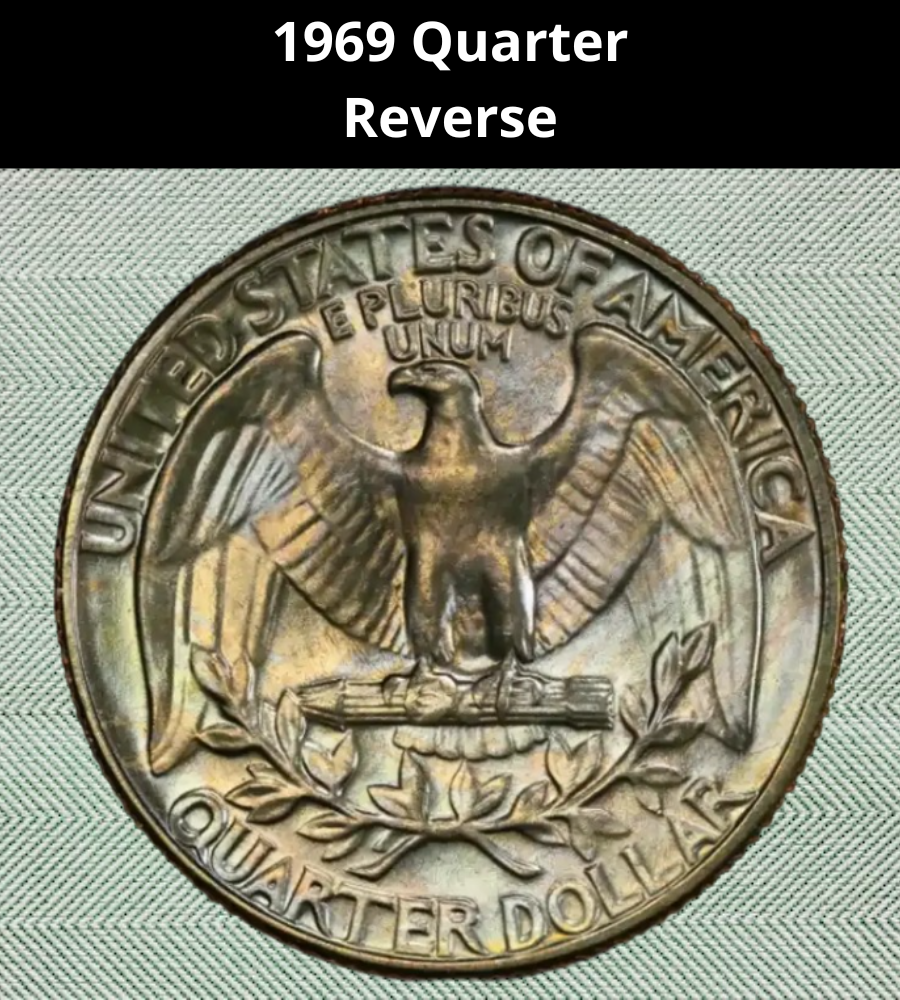
The reverse depicts a heraldic eagle with its wings outstretched, perched on a bundle of arrows that symbolize strength and readiness for defense. Beneath the arrows lies an olive branch wreath, representing peace.
The inscriptions include “UNITED STATES OF AMERICA” across the top rim, “E PLURIBUS UNUM” above the eagle’s head, and the denomination “QUARTER DOLLAR” curving along the bottom edge.
Coins struck at Denver carry a small “D” mint mark below the wreath, while San Francisco proofs show an “S”. Philadelphia issues, as tradition dictated, feature no mint mark.
Other Features of the 1969 Quarter
- Composition: Copper-nickel clad (91.67% copper, 8.33% nickel)
- Weight: 5.67 grams
- Diameter: 24.3 mm (0.96 inches)
- Thickness: 1.75 mm
- Edge: Reeded with 119 reeds
- Mintage: Over 176 million combined between Philadelphia and Denver, plus proof issues from San Francisco
The 1969 quarter belongs firmly in the clad era, but its design and symbolism continued to honor the nation’s heritage, maintaining continuity with earlier silver issues while adapting to modern minting realities.
1969 Quarter Grading
| Grade | Description | Typical Value |
|---|---|---|
| Good (G-4) – Fine (F-12) | Heavy circulation wear; Washington’s hair flat, lettering visible but worn. Eagle feathers mostly smooth. | $0.25 – $0.29 |
| Very Fine (VF-20) – Extremely Fine (EF-40) | Moderate wear; partial detail in hair and wing feathers. | $0.30 – $0.67 |
| About Uncirculated (AU-50 to AU-58) | Light wear on cheek and eagle’s breast; traces of mint luster. | $1 – $3 |
| Mint State (MS-60 to MS-63) | Full mint luster but with contact marks or scuffs. | $6 – $12 |
| Mint State (MS-64 to MS-65) | Sharper strike, minimal marks; Denver issues scarcer in top grades. | $18 – $40 |
| Mint State (MS-66 and above) | Premium eye appeal, nearly flawless surfaces. Rare for circulation strikes. | $150 – $600+ |
| Proof (PR-60 to PR-65) | Mirror-like fields; minor imperfections; struck in San Francisco. | $4 – $7 |
| Cameo (CAM) | Frosted devices contrast with mirrored fields. | $8 – $15 |
| Deep Cameo (DCAM) | Bold frosted contrast, “black-and-white” look. Most desirable proof finish. | $25 – $50+ |
1969 Quarter Value Guides
1969 No Mint Mark Quarter Value
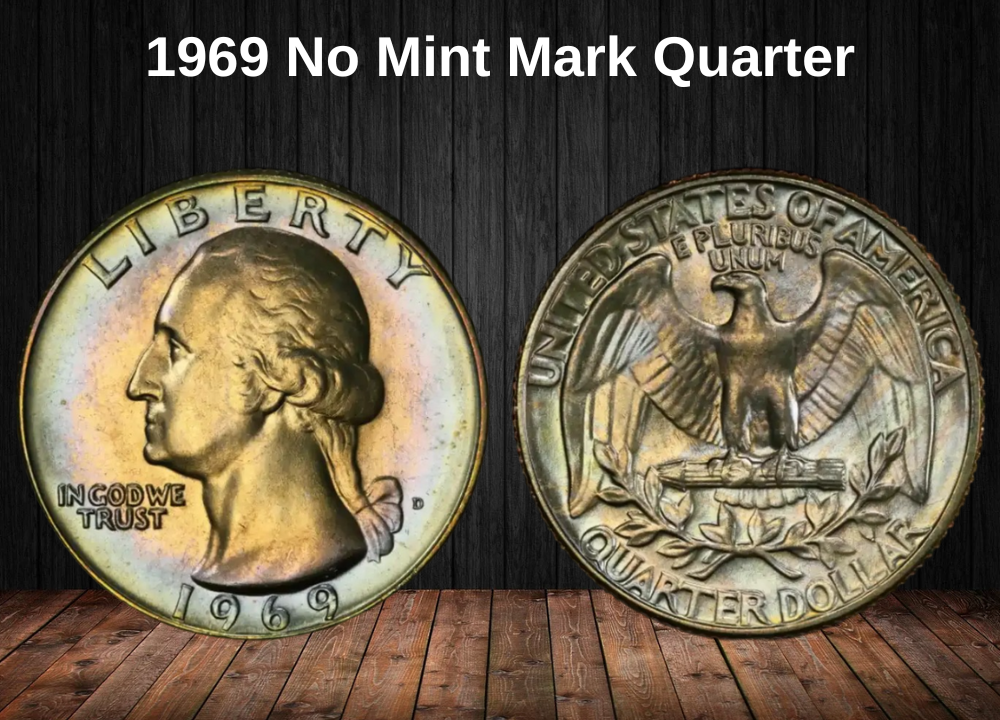
The 1969 No Mint Mark Quarter was struck at the Philadelphia Mint, which traditionally did not use a mint mark until 1980. With a production of more than 176 million coins combined with Denver, Philadelphia issues make up a large share of circulation strikes from this year.
While common in worn grades and often still found in pocket change, these clad quarters become valuable in Mint State (MS-65 and above). Coins with sharp strikes, strong luster, and minimal bag marks are especially desirable. However, many Philadelphia quarters from 1969 suffer from weak strikes and planchet issues, making high-grade survivors scarcer than their mintage numbers might suggest.
The finest known examples, graded MS-67 and MS-68, have reached hundreds or even thousands of dollars at auction, reflecting their rarity in pristine condition.
1969 No Mint Mark Quarter Value/Grade Chart
(Latest Auction Records Included)
| Grade | Value Range |
|---|---|
| Good (G-4) | $0.25 (face value) |
| Fine (F-12) | $0.29 |
| Extremely Fine (EF-40) | $0.67 |
| About Uncirculated (AU-50) | $1.50 |
| Mint State (MS-60) | $5.00 |
| Mint State (MS-63) | $8.00 |
| Mint State (MS-65) | $11.00 |
| Mint State (MS-66) | $75 – $150 |
| Mint State (MS-67) | $400 – $600 |
| Mint State (MS-68) | $9,200 (auction record) |
1969-D Quarter Value
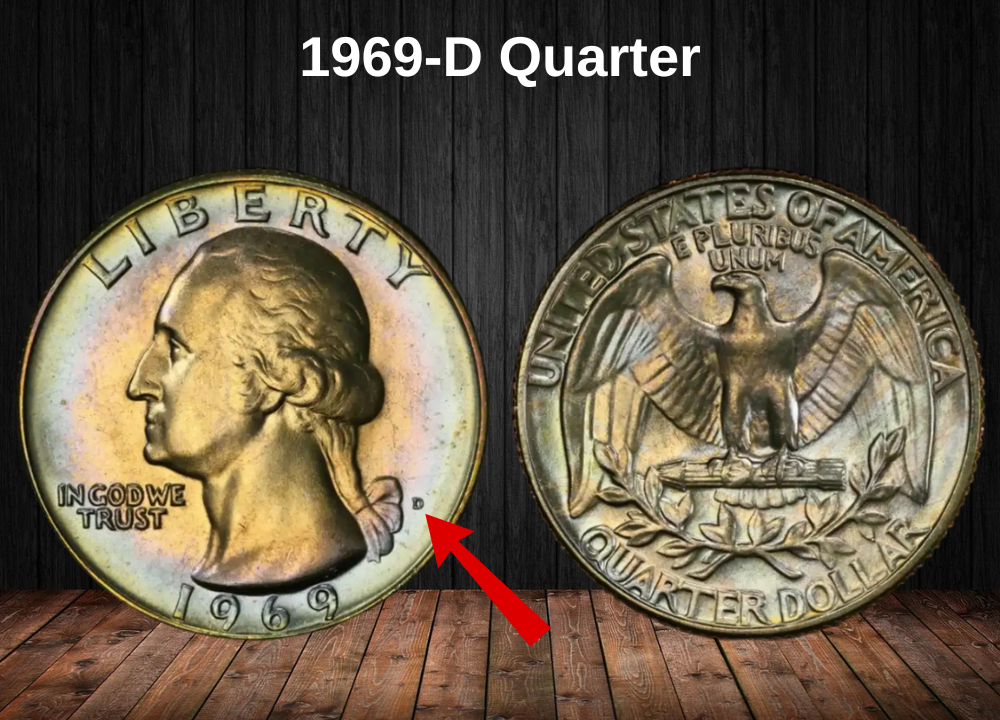
The 1969-D Washington Quarter, struck at the Denver Mint, had a massive mintage of over 114 million coins. The small “D” mint mark beneath the wreath on the reverse identifies these pieces.
While these coins are plentiful in circulation and worth face value when worn, the challenge lies in finding gem-quality Mint State survivors. Many 1969-D quarters suffer from weak strikes, surface marks, or poor luster due to heavy production, making top-grade examples scarce.
In particular, MS-66 and higher are difficult to locate and command strong premiums. The finest known specimens, graded MS-67+, have sold for more than $5,000 at auction, making them one of the key modern clad quarter rarities.
1969-D Quarter Value/Grade Chart
(Latest Auction Records Included)
| Grade | Value Range |
|---|---|
| Good (G-4) | $0.25 (face value) |
| Fine (F-12) | $0.29 |
| Extremely Fine (EF-40) | $0.67 |
| About Uncirculated (AU-50) | $1.25 |
| Mint State (MS-60) | $5.00 |
| Mint State (MS-63) | $7.00 |
| Mint State (MS-65) | $18.86 |
| Mint State (MS-66) | $125 – $300 |
| Mint State (MS-67) | $600 – $1,000 |
| Mint State (MS-67+) | $5,100 (auction record) |
1969-S Proof Quarter Value
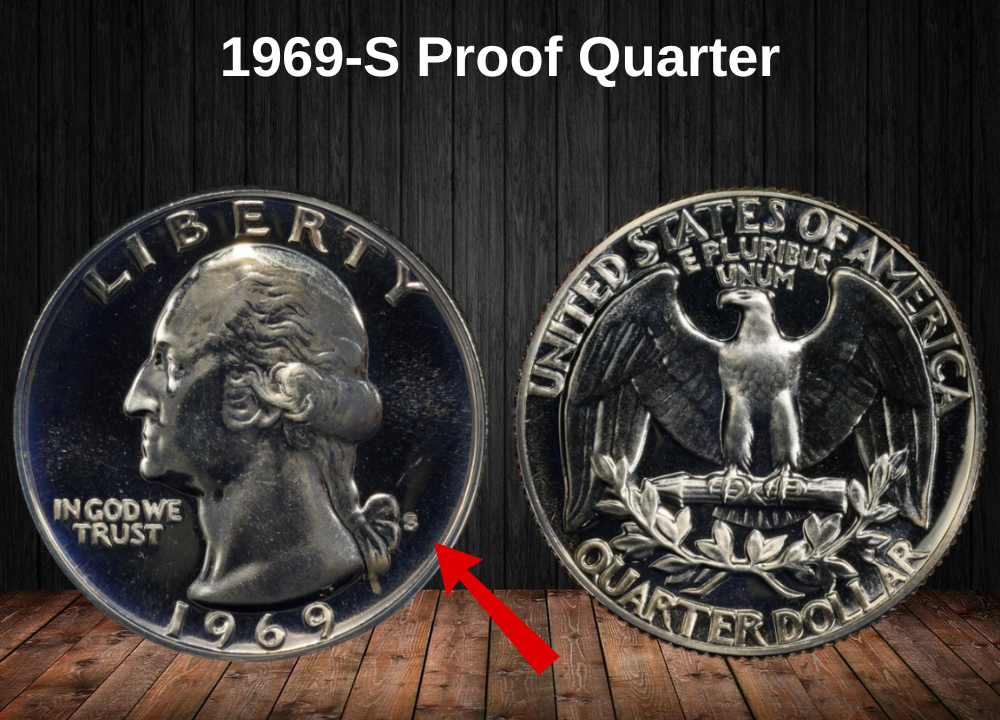
The 1969-S Proof Quarter was struck at the San Francisco Mint and forms part of the annual proof sets sold directly to collectors. With a mintage of over 2.9 million, these coins are readily available, but their value depends heavily on grade and visual quality.
Proof coins from this year display mirror-like fields and sharp design details, a standard for modern proofs. However, most lack the frosted contrast required for Cameo (CAM) or Deep Cameo (DCAM) designations. Regular proofs without contrast are the most common and most affordable of the 1969-S issues.
Collectors value them for their role in continuing the tradition of high-quality proof production after the transition from silver to clad coinage. Pristine examples in PR-69 are relatively easy to find, while the elusive PR-70 remains rare and commands strong premiums.
1969-S Proof Quarter Value/Grade Chart
(Latest Auction Records Included)
| Grade | Value Range |
|---|---|
| Proof (PR-60) | $2.00 |
| Proof (PR-63) | $3.50 |
| Proof (PR-65) | $5.00 |
| Proof (PR-67) | $6.62 |
| Proof (PR-68) | $8 – $12 |
| Proof (PR-69) | $20 – $40 |
| Proof (PR-70) | Rare – $200+ |
1969-S CAM Quarter Value
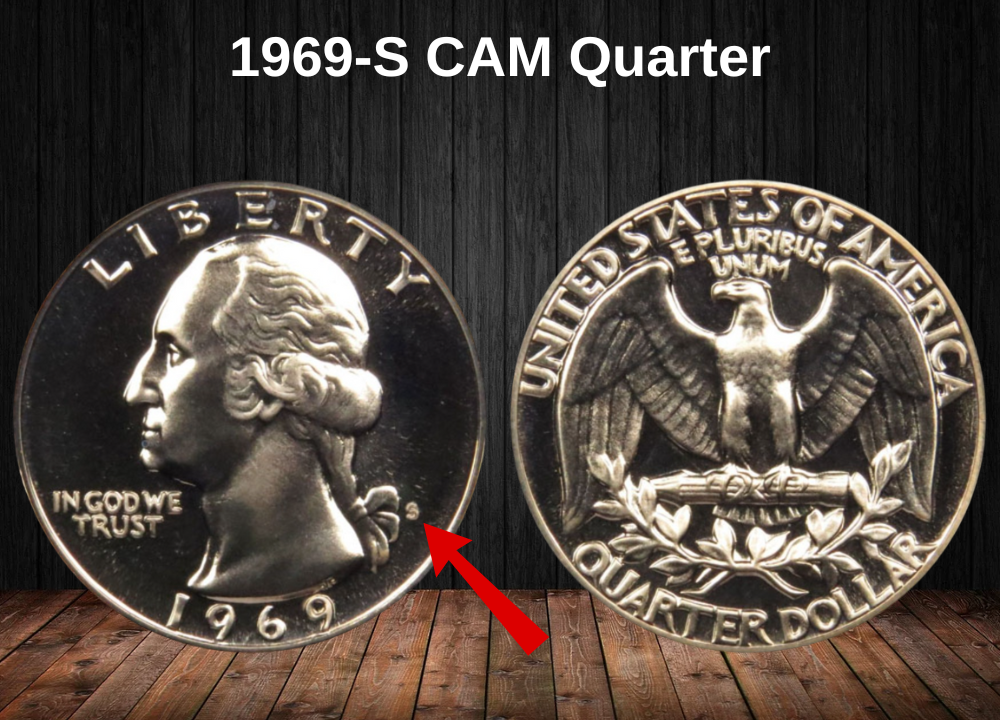
The 1969-S Cameo (CAM) Quarter is a proof issue that shows noticeable frosted contrast on Washington’s portrait and the eagle, standing out against the reflective mirror-like fields. This finish occurs when the dies were freshly polished and treated, but only a portion of the 2.9 million proofs minted that year achieved the strong cameo effect.
While more common than the rarer Deep Cameo (DCAM) examples, 1969-S CAM quarters are significantly scarcer than standard proofs. Collectors prize them for their superior eye appeal, as the frosted devices give the coin a more dramatic, proof-like appearance.
High-grade Cameo proofs, especially in PR-68 and PR-69, can command strong premiums. They offer a balance between affordability and rarity, making them an attractive option for collectors building type sets or proof runs of Washington quarters.
1969-S CAM Quarter Value/Grade Chart
(Latest Auction Records Included)
| Grade | Value Range |
|---|---|
| Proof CAM (PR-65) | $6.00 |
| Proof CAM (PR-67) | $7.62 |
| Proof CAM (PR-68) | $10 – $15 |
| Proof CAM (PR-69) | $25 – $50 |
| Proof CAM (PR-70) | Rare – $150+ |
1969-S DCAM Quarter Value
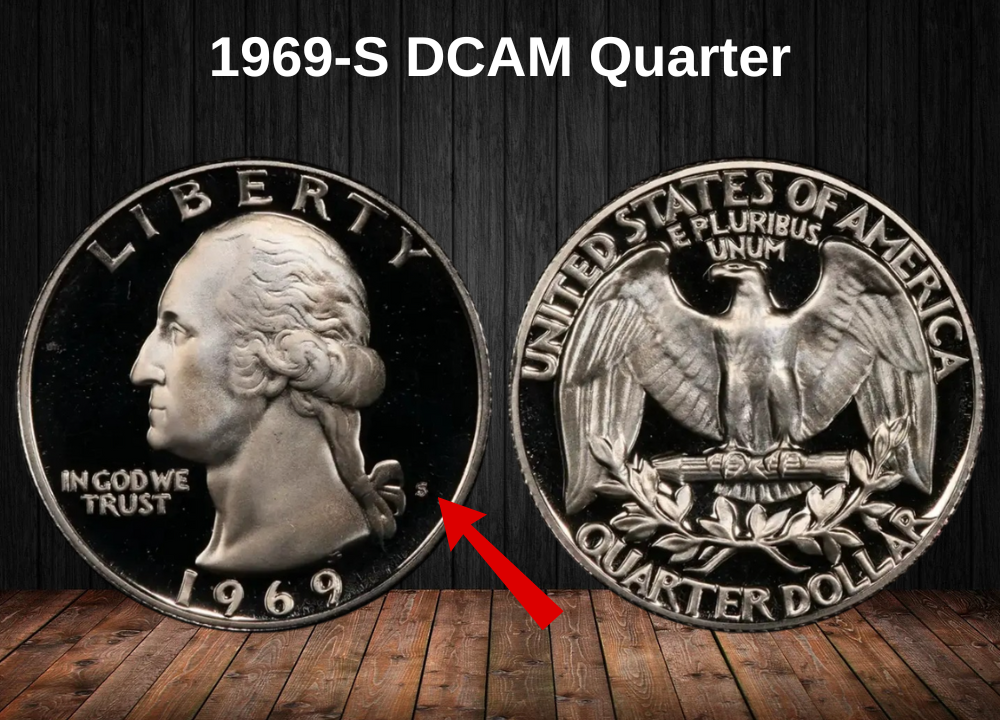
The 1969-S Deep Cameo (DCAM) Quarter is the pinnacle of proof production for that year, displaying the strongest possible contrast between frosted devices and deeply mirrored fields. The result is a striking black-and-white effect that makes Washington’s portrait and the eagle look almost three-dimensional.
Only a small fraction of the 2.9 million proof quarters minted in San Francisco achieved the DCAM designation. This finish required perfectly prepared dies and early strikes, meaning most proofs from later die states lack the bold contrast needed for certification as DCAM.
Collectors chase these coins not just for their beauty but also for their rarity in high grades. While PR-67 and PR-68 examples remain affordable, top-pop PR-69 DCAMs have reached over $2,000 at auction, making them highly desirable for registry sets.
1969-S DCAM Quarter Value/Grade Chart
(Latest Auction Records Included)
| Grade | Value Range |
|---|---|
| Proof DCAM (PR-65) | $12.00 |
| Proof DCAM (PR-67) | $18.00 |
| Proof DCAM (PR-68) | $22.00 – $35.00 |
| Proof DCAM (PR-69) | $100 – $250+ |
| Proof DCAM (PR-70) | Extremely Rare – $2,000+ |
Rare 1969 Quarter Error List
The 1969 Washington Quarter series is best known for its clad composition and large mintages, but several rare error varieties make this year a true treasure hunt for collectors. Below are the most significant errors, explained in detail with updated value charts.
1. 1969-D Doubled Die Obverse (DDO) FS-101
The 1969-D DDO FS-101 is the standout error of the year. This variety shows strong doubling on the obverse inscriptions, especially in “LIBERTY”, “IN GOD WE TRUST”, and the date. Washington’s profile also exhibits subtle doubling in the hair and facial details.
These errors occurred when the working die received multiple hub impressions slightly out of alignment. Well-struck Mint State examples are scarce and command impressive premiums.
Value Chart – 1969-D DDO FS-101
| Grade | Value Range |
|---|---|
| VF-20 | $25 – $40 |
| EF-40 | $50 – $75 |
| AU-50 | $90 – $150 |
| MS-60 | $200 – $300 |
| MS-63 | $400 – $600 |
| MS-65 | $900 – $1,400 |
| MS-66 | $2,000+ |
2. 1969-S Proof Doubled Die Obverse (DDO)
The 1969-S Proof DDO is an impressive error that combines proof quality with hub doubling. The most visible doubling appears in the lettering “LIBERTY” and “IN GOD WE TRUST”, with some separation in the date numerals.
Because these are proofs, the doubling appears crisper and easier to authenticate, especially in Cameo and Deep Cameo designations. These coins are far scarcer than circulation-strike DDOs.
Value Chart – 1969-S Proof DDO
| Grade | Value Range |
|---|---|
| PR-64 | $60 – $90 |
| PR-65 | $120 – $175 |
| PR-66 | $200 – $350 |
| PR-67 | $450 – $700 |
| PR-68 | $900 – $1,400 |
| PR-69 CAM/DCAM | $1,800 – $2,500+ |
3. 1969-D RPM (Repunched Mint Mark) FS-501
The 1969-D RPM FS-501 is a variety where the “D” mint mark was punched more than once into the die, creating a shadow or doubled appearance. On this variety, the secondary mint mark typically appears northwest of the primary D, making it visible under magnification.
RPMs are popular with error specialists because they reflect the pre-computerized minting era when mint marks were added by hand.
Value Chart – 1969-D RPM FS-501
| Grade | Value Range |
|---|---|
| VF-20 | $15 – $25 |
| EF-40 | $30 – $50 |
| AU-50 | $60 – $90 |
| MS-60 | $120 – $160 |
| MS-63 | $200 – $275 |
| MS-65 | $400 – $600 |
| MS-66 | $800+ |
4. 1969-D RPM FS-502
Another repunched mint mark variety, the 1969-D RPM FS-502, shows the secondary “D” shifted in a different direction, often southeast of the primary punch. These small differences justify separate catalog listings and make them collectible alongside FS-501.
Value Chart – 1969-D RPM FS-502
| Grade | Value Range |
|---|---|
| VF-20 | $12 – $20 |
| EF-40 | $25 – $40 |
| AU-50 | $50 – $80 |
| MS-60 | $100 – $140 |
| MS-63 | $160 – $225 |
| MS-65 | $350 – $500 |
| MS-66 | $700+ |
5. 1969-S Proof DDR (Doubled Die Reverse) FS-801
The 1969-S Proof DDR FS-801 displays strong doubling on the reverse inscriptions, especially “UNITED STATES OF AMERICA” and “QUARTER DOLLAR.” The eagle’s wings and tail feathers also show visible spread.
This variety is highly sought after because proof DDRs are far scarcer than their circulation-strike counterparts, and Cameo/Deep Cameo designations amplify collector demand.
Value Chart – 1969-S Proof DDR FS-801
| Grade | Value Range |
|---|---|
| PR-64 | $50 – $80 |
| PR-65 | $100 – $150 |
| PR-66 | $175 – $250 |
| PR-67 | $350 – $500 |
| PR-68 | $700 – $1,200 |
| PR-69 CAM/DCAM | $1,600 – $2,400+ |
6. 1969 Transitional Error (Clad on Silver Planchet)
A very rare transitional error occurred when a 1969 quarter was struck on a leftover silver planchet from the pre-1965 era. These quarters weigh about 6.25 grams instead of the normal 5.67 grams. Because silver planchets should no longer have been in use, these coins are extremely rare and highly prized.
Value Chart – 1969 Silver Transitional Error
| Grade | Value Range |
|---|---|
| AU-50 | $3,000 – $4,000 |
| MS-60 | $5,000 – $6,500 |
| MS-63 | $7,500 – $9,000 |
| MS-65 | $12,000 – $15,000+ |
Where to Sell Your Quarter Coin?
Now that you know the value of your quarter, the next step is deciding where to sell it. There are several trusted options—both online and in person—that can help you get the best price depending on your coin’s rarity and condition.
To see the full list of recommended places, along with their advantages and disadvantages, check our complete guide on where to sell your quarter coins.
FAQ about the 1969 Quarters
1) What is the composition of the 1969 quarter?
- Outer layers: 75% copper, 25% nickel
- Core: Pure copper
- Weight: 5.67 g
- Diameter: 24.3 mm
- Edge: Reeded with exposed copper core
2) Where were 1969 quarters minted, and how many?
- Philadelphia (no mintmark): 176,212,000
- Denver (“D”): 114,372,000
- San Francisco (“S” Proof only): 2,934,631
3) Are 1969 quarters rare?
- Circulated: Very common.
- High-grade MS-67+ business strikes: Scarce due to heavy production marks and strike issues.
- Proofs with Cameo/Deep Cameo contrast: Condition rarities.
4) What are the values of 1969 quarters?
- Circulated: 25¢ face value
- MS-65: $8–15
- MS-67: $250–500+ (especially Philadelphia)
- Proof PR-65: $5–8
- Proof PR-69 DCAM: $150–300+
5) What errors or varieties exist in 1969 quarters?
- 1969-D RPMs (Repunched Mintmarks): Popular with specialists.
- Doubled dies (DDO/DDR): Minor varieties exist; worth cherrypicking.
- Clad errors: Off-center strikes, broadstrikes, clipped planchets.
- Wrong planchets: Occasionally struck on dime stock.
6) How do you identify a 1969-S Proof quarter?
- Struck at San Francisco only.
- Mirrorlike fields, squared rims, and sometimes frosted devices (Cameo or Deep Cameo).
- High-grade PR-69 DCAM coins are especially desirable.
7) Why do collectors value the 1969 quarter?
- Part of the early clad era, now over 50 years old.
- Offers RPM and minor doubled die varieties for cherrypickers.
- Proofs from 1969 are affordable but conditionally scarce in Deep Cameo.
- Registry collectors compete for MS-67+ business strikes, which are tough despite high mintages.

